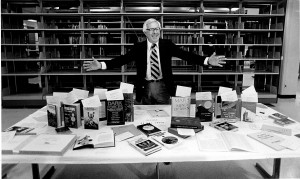
Ray Bradbury, one of the most influential and prolific science fiction writers of all time, has had a lasting impact on a broad array of entertainment culture. In his canon of books, Bradbury often emphasized exploring human psychology to create tension in his stories, which left the more fantastical elements lurking just below the surface. Many of his works have been adapted for movies, comic books, television, and the stage, and the themes he explores continue to resonate with audiences today. The notable 1966 classic film Fahrenheit 451 perfectly captured the definition of a futuristic dystopia, for example, while the eponymous television series he penned, The Ray Bradbury Theatre, is an anthology of science fiction stories and teleplays whose themes greatly represented Bradbury’s signature style. ScriptPhD.com was privileged to cover one of Ray Bradbury’s last appearances at San Diego Comic-Con, just prior to his death, where he discussed everything from his disdain for the Internet to his prescient premonitions of many technological advances to his steadfast support for the necessity of space exploration. In the special guest post below, we explore how the latest Bradbury adapataion, the new television show The Whispers, continues his enduring legacy of psychological and sci-fi suspense.
Premiering to largely positive reviews, ABC’s new show The Whispers is based on Bradbury’s short story “Zero Hour” from his book The Illustrated Man. Both stories are about children finding a new imaginary friend, Drill, who wants to play a game called “Invasion” with them. The adults in their lives are dismissive of their behavior until the children start acting strangely and sinister events start to take place. Bradbury’s story is a relatively short read with just a few characters that ends on a chilling note, while The Whispers seeks to extend the plot over the course of at least one season, and to that end it features an expanded cast including journalists, policemen, and government agents.
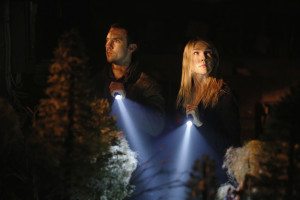
The targeting of young, impressionable minds by malevolent forces is deeply disturbing, and it seems entirely plausible that parents would write off odd behavior or the presence of imaginary friends as a simple part of growing up. In both the story and the show, the adults do not realize that they are dealing with a very real and tangible threat until it’s too late. The dread escalates when the adults realize that children who don’t know each other are all talking to the same person. The fear of the unknown, merely hinted at in Bradbury’s story, will seem to be exploited to great effect during the show’s run.
When “Zero Hour” was written in 1951, America was in the midst of McCarthyism and the Red Scare, and the fear of Communism and homosexuality ran rampant. As the tensions of the Cold War grew, so too did the anxiety that Communists had infiltrated American society, with many of the most aggressively targeted individuals for “un-American” activities belonging to the Hollywood filmmaking and writing communities. Bradbury’s story shares with many other fictions of the time period a healthy dose of paranoia and fear around possession and mind control. Indeed, Fahrenheit 451, a parable about a futuristic world in which books are banned, is also a parable about the dangers of censorship and political hysteria.
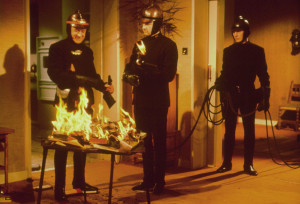
The makers of The Whispers recognize that these concerns still permeate our collective consciousness, and have updated the story with modern subject matter, expanding the subject of our apprehension to state surveillance and abuse of authority. To wit, many recent films and shows have explored similar themes amidst the psychological ramifications of highly developed artificial intelligence and its ability to control and even harm humans. Our concurrent obsession with and fear of technology run amok is another topic explored by Ray Bradbury in many of his later works. The idea that those around us are participating in a grand scheme that will bring us harm still sows seeds of discontent and mistrust in our minds. For that reason, the concept continues to be used in suspense television and cinema to this day.
One of the reasons Bradbury’s work continues to serve as the inspiration for so much contemporary entertainment is his use of everyday situations and human oddities to create intrigue. One such example is a 5-issue series called Shadow Show based on Bradbury’s work, released in 2014 by comic book publisher IDW. Some of the best artists, writers and comics had agreed to participate in this project since Bradbury had such a huge influence in their writing and art. In this anthology, Harlan Ellison’s “Weariness” perfectly elicits Bradbury’s dystopia in which our main characters experience the universe’s end. The terrifying end of life as we know it is one of Bradbury’s recurring themes, depicted in writings like The Martian Chronicles. He rarely felt the need to set his stories in faraway galaxies or adorn them with futuristic gadgets. Most of his writing focussed on the frightening aspects of humans in quotidien surroundings, such as in the 2002 novel, Let’s All Kill Constance. Much of The Whispers takes place in an ordinary suburban neighborhood, and like many of his stories, what seems at first to be a simple curiosity, is hiding something much more complex and frightening.
Fiction that brings out the spookiness inherent in so many facets of human nature creates a stronger and more enduring bond with its audience, since we can easily deposit ourselves into the characters’ situations, and all of a sudden we find that we’re directly experiencing their plight on an emotional level. That’s always been, as Bradbury well knew, the key to great suspense.
Maria Ramos is a tech and sci-fi writer interested in comic books, cycling, and horror films. Her hobbies include cooking, doodling, and finding local shops around the city. She currently lives in Chicago with her two pet turtles, Franklin and Roy. You can follow her on Twitter @MariaRamos1889.
*****************
ScriptPhD.com covers science and technology in entertainment, media and advertising. Hire our consulting company for creative content development. Follow us on Twitter and Facebook. Subscribe to our podcast on SoundCloud or iTunes.
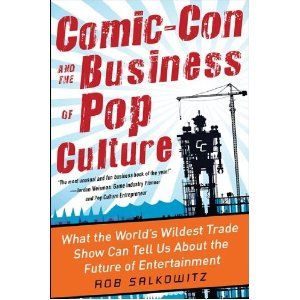
This past weekend, over 130,000 people descended on the San Diego Convention Center to take part in Comic-Con 2012. Each year, a growing amalgamation of costumed super heroes, comics geeks, sci-fi enthusiasts and die-hard fans of more mainstream entertainment pop culture mix together to celebrate and share the popular arts. Some are there to observe, some to find future employment and others to do business, as beautifully depicted in this year’s Morgan Spurlock documentary Comic-Con Episode IV: A Fan’s Hope. But Comic-Con San Diego is more than just a convention or a pop culture phenomenon. It is a symbol of the big business that comics and transmedia pop culture has become. It is a harbinger of future profits in the entertainment industry, which often uses Comic-Con to gauge buzz about releases and spot emerging trends. And it is also a cautionary tale for anyone working at the intersection of television, film, video games and publishing about the meteoric rise of an industry and the uncertainty of where it goes next. We review Rob Salkowitz’s new book Comic-Con and the Business of Pop Culture, an engaging insider perspective on the convergence of geekdom and big business.
Comic-Con wasn’t always the packed, “see and be seen” cultural juggernaut it’s become, as Salkowitz details in the early chapters of his book. In fact, 43 years ago, when the first Con was held at the US Grant hotel in San Diego, led by the efforts of comics superfan Shel Dorf, only 300 people came! In its early days, Comic-Con was a casual place where the titans of comics publishers such as DC and Marvel would gather with fans and other semi-professional artists to exchange ideas and critique one another’s work in an intimate setting. In fact, Salkowitz, a long-time Con attendee who has garnered quite a few insider perks along the way over the years, recalls that his early days of attendance were not quite so harried and frantic. The audience for Comic-Con steadily grew until about 2000, when attendance began skyrocketing, to the point that it now takes over an entire American city for a week each year. Why did this happen? Salkowitz argues that this time period is when a quantum leap shift occurred away from comic books and towards comics culture, a platform that transcends graphic novels and traditional comic books and usurps the entertainment and business matrices of television, film, video games and other “mainstream” art. Indeed, when ScriptPhD last covered Comic-Con in 2010, even their slogan changed to “celebrating the popular arts,” a seismic shift in focus and attention. (This year, Con organizers made explicit attempts to explore the history and heritage partially in order to assuage purists who argue that the event has lost sight of its roots.) In theory, this meteoric rise is wonderful, right? With all that money flowing, everyone wins! Not so fast.

Lost amidst the pomp and circumstance of the yearly festivities is the fact that within this mixed array of cultural forces, there are cracks in the armor. For one thing, comics themselves are not doing well at all. For example, more than 70 million people bought a ticket to the 2008 movie The Dark Knight, but fewer than 70,000 people bought the July 2011 issue of Batman: The Dark Knight. Salkowitz postulates that we may be nearing the unimaginable: a “future of the comics industry that does not include comic books.” To unravel the backstory behind the upstaging of an industry at its own event, Salkowitz structures the book around the four days of the 2011 San Diego Comic-Con. In a rather clever bit of exposition, he weaves between four days of events, meetings, exclusive parties, panels of various size and one-on-one interactions to take the reader on a guided tour of Comic-Con, while in the process peeling back the layers of transmedia and business collaborations
that are the underbelly of the current “peak geek” saturation. A brief divergence to the downfall of the traditional publishing industry, including bookstores (the traditional sellers of comics), the reliance of comics on movie adaptations and the pitfalls of digital publication is a must-read primer for anyone wishing to work in the industry. Even more strapped are merchants that sell rare comics and collectibles on the convention floor. Often relegated to the side corners with famous comics artists so that entertainment conglomerates can occupy prime real estate on the floor, many dealers struggle just to break even. Among them are independent comics, self-published artists, and “alternative” comics, all hoping to cash in on the Comic-Con sweepstakes. Comics may be big business, but not for everyone. Forays into the world of grass-roots publishing, the microcosm of the yearly Eisner Awards for achievement in comics and the alternative con within a Con called Trickster (a more low-key networking event that harkens to the days of yore) all remind the reader of the tight-knit relationship that comics have with their fan base.
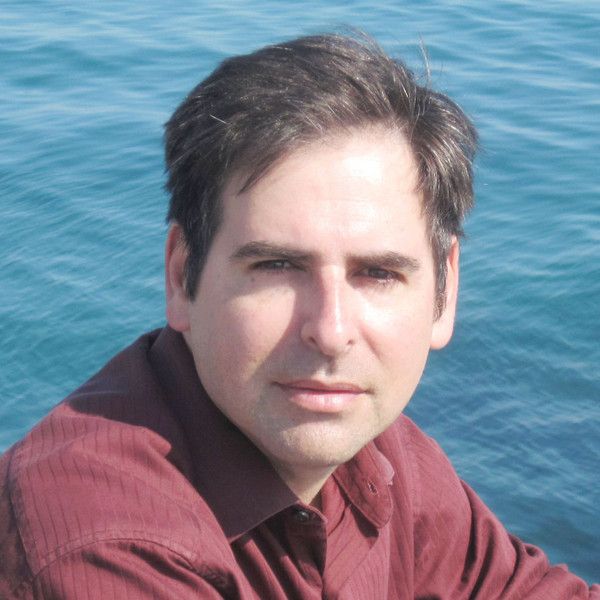
In many ways, the comics crisis that Salkowitz describes is not only very real, but difficult to resolve. The erosion of print media is unlikely to be reversed, nor is the penchant towards acquiring free content in the digital universe. Furthermore, video games, represent one of the biggest single-cause reasons for the erosion of comics in the last 20 years. Games such as Halo, Mass Effect, Grand Theft Auto and others, execute recurring linear storylines in a more cost-conscious three-dimensional interactive platform. On the other hand, there are also a myriad of reasons to be positive about the future of comics. The advent of tablets (notably the iPad) represents an unprecedented opportunity to re-establish comics’ popularity and distribution profits. Traditional and casual fans of comics haven’t gone anywhere, they’re just temporarily drowned out by the lines for the Twilight panel. A rising demographic of geek girls represents a potential growth segment in audience. And finally, a tremendous rise in popularity of traditional comics (even the classics) in global markets such as India and China portends a new global model for marketing and distribution. If superheroes are to continue as the mainstay of live-action media, the entertainment industry is highly dependent upon a viable, continued production of good stories. Movies need for comics to stay robust. The creativity and ingenuity that has been the hallmark of great comics continues to thrive with independent artists, some of whose work has gone viral and garnered publishing contracts.

Make no mistake, comics fans and enthusiastic geeks. Comic-Con and the Business of Pop Culture is very much a business and brand strategy book, centered around a very trendy and chic brand. There’s no question that casual fans and people interested in the more technical side of comics transmedia will find it an interesting, if at times esoteric, read. But for those working in (or aspiring to) the intersection of comics and entertainment, it is an essential read. Cautioning both the entertainment and comics industries against complacency against what could be a temporary “gold rush” cultural phenomenon, Salkowitz nevertheless peppers the book with salient advice for sustaining comics-based entertainment and media, while fortifying traditional comics and their creative integrity for the next generation of fans. The final portion of the book is its strongest; a hypothetical journey several years into the future, utilizing what he calls “scenario planning” to prognosticate what might happen. Comic-Con (and all the business that it represents) might grow larger than ever, an absolute phenomenon, might scale back to account for a diminishing fan interest, might stay the same or fraction into a series of global events to account for the growing overseas interest in traditional comics. Which one will come to fruition depends on brand synergy, fan growth and engagement, distribution with digital and interactive media, and a carefully cultivated relationship between comics audiences, creators and publishers. Salkowitz calls Comic-Con a “laboratory in which the global future of media is unspooling in real time.” What will happen next? Like any good scientist knows, experiments, even under controlled circumstances, are entirely unpredictable. See you in San Diego next year!
Rob Salkowitz is the cofounder and Principal Consultant of Seattle-based MediaPlant LLC and is the author of two other books, Young World Rising and Generation Blend. He also teaches in the Digital Media program at the University of Washington. Follow Rob on Twitter.
~*ScriptPhD*~
*****************
ScriptPhD.com covers science and technology in entertainment, media and advertising. Hire our consulting company for creative content development.
Subscribe to free email notifications of new posts on our home page.
]]>
Read through any archive of science fiction movies, and you quickly realize that the merger of pop culture and science dates as far back as the dawn of cinema in the early 1920s. Even more surprising than the enduring prevalence of science in film is that the relationship between film directors, scribes and the science advisors that have influenced their works is equally as rich and timeless. Lab Coats in Hollywood: Science, Scientists, and Cinema (2011, MIT Press), one of the most in-depth books on the intersection of science and Hollywood to date, serves as the backdrop for recounting the history of science and technology in film, how it influenced real-world research and the scientists that contributed their ideas to improve the cinematic realism of science and scientists. For a full ScriptPhD.com review and in-depth extended discussion of science advising in the film industry, please click the “continue reading” cut.
Written by David A. Kirby, Lecturer in Science Communication Studies at the Centre for History of Science, Technology and Medicine at the University of Manchester, England, Lab Coats offers a surprising, detailed analysis of the symbiotic—if sometimes contentious—partnership between filmmakers and scientists. This includes the wide-ranging services science advisors can be asked to provide to members of a film’s production staff, how these ideas are subsequently incorporated into the film, and why the depiction of scientists in film carries such enormous real-world consequences. Thorough, detailed, and honest, Lab Coats in Hollywood is an exhaustive tome of the history of scientists’ impact on cinema and storytelling. It’s also an essential and realistic road map of the challenges that scientists, engineers and other technical advisors might face as they seriously pursue science advising to the film industry as a career.
The essential questions that Lab Coats in Hollywood addresses are these—is it worth it to hire a science advisor for a movie production? Is it worth it for the scientist to be an advisor? The book’s purposefully vague conclusion is that it depends solely on how the scientist can film’s storyline and visual effects. Kirby wisely writes with an objective tone here because the topic is open to a considerable amount of debate among the scientists and filmmakers profiled in the book. Sometimes a scientist is so key to a film’s development, he or she becomes an indispensible part of the day-to-day production. A good example of this is Jack Horner, paleontologist at the Museum of the Rockies in Bozeman, MT, and technical science advisor to Steven Spielberg in Jurassic Park and both of its sequels. Horner, who drew from his own research on the link between dinosaurs and birds for a more realistic depiction of the film’s contentious science, helped filmmakers construct visuals, write dialogue, character reactions, animal behaviors, and map out entire scenes. J. Marvin Herndon, a geophysicist at the Transdyne Corporation, approached the director of the disaster film The Core when he learned the plot was going to be based on his controversial hypothesis about a giant uranium ball in the center of the Earth. Herndon’s ideas were fully incorporated into the film’s plot, while Herndon rode the wave of publicity from the film to publish his research in a PNAS paper. The gold standard of science input, however, were Stanley Kubrik’s multiple science and engineering advisors for 2001: A Space Odyssey, discussed in much further detail below.

Kirby hypothesizes that sometimes, a film’s poor reception might have been avoided with a science advisor. He provides the example of the Arnold Schwarzenegger futuristic sci-fi bomb The Sixth Day, which contained a ludicrously implausible use of human cloning in its main plot. While the film may have been destined for failure, Kirby posits that it only could have benefited from proper script vetting by a scientist. By contrast, the 1998 action adventure thriller Armageddon came under heavy expert criticism for its basic assertion that an asteroid “the size of Texas” could go undetected until eighteen days before impact. Director Michael Bay patently refused to take the advice of his advisor, NASA researcher Ivan Bakey, and admitted he was sacrificing science for plot, but Armageddon went on to be a huge box office hit regardless. Quite often, the presence of a science advisor is helpful, albeit unnecessary. One of the book’s more amusing anecdotes is about Dustin Hoffman’s hyper-obsessive shadowing of a scientist for the making of the pandemic thriller Outbreak (great guide to the movie’s science can be found here). Hoffman was preparing to play a virologist and wanted to infuse realism in all of his character’s reactions. Hoffman kept asking the scientist to document reactions in mundane situations that we all encounter—a traffic jam, for example—only to come to the shocking conclusion that the scientist was a real person just like everyone else.
Most of the time, including scientists in the filmmaking process is at the discretion of the studios because of the one immutable decree reiterated throughout the book: the story is king. When a writer, producer or director hires a science consultant, their expertise is utilized solely to facilitate, improve or augment story elements for the purposes of entertaining the audience. Because of this, one of the most difficult adjustments a science consultant may face is a secondary status on-set even though they may be a superstar in their own field. Some of the other less glamorous aspects of film consulting include heavy negotiations with unionized writers for script or storyline changes, long working hours, a delicate balance between side consulting work and a day job, and most importantly, an inconsistent (sometimes nonexistent) payment structure per project. I was notably thrilled to see Kirby mention the pros and cons of programs such as the National Science Foundation’s Creative Science Studio (a collaboration with USC’s school of the Cinematic Arts) and the National Academy of Science’s Science and Entertainment Exchange, which both provide on-demand scientific expertise to the Hollywood filmmaking community in the hope of increasing and promoting the realism of scientific portrayal in film. While valuable commodities to science communication, both programs have had the unfortunate effect of acclimating Hollywood studios to expect high-level scientific consulting for free.
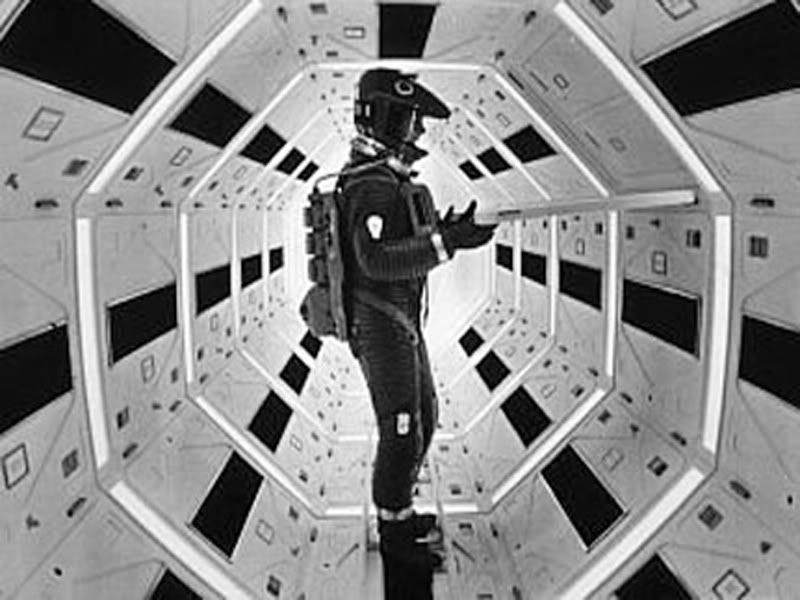
1968’s 2001: A Space Odyssey is widely considered by popular consensus to be the greatest sci-fi movie ever made, and certainly the most influential. As such, Kirby devotes an entire chapter to detailing the film’s production and integration of science. Director Stanley Kubrik took painstaking detail in scientific accuracy to explore complex ideas about the relationship between humanity and technology, hiring a range of advisors from anthropologists, aeronautical engineers, statisticians, and nuclear physicists for various stages of production. Statistician I. J. Good provided advice on supercomputers, aerospace Harry Lange provided production design, while NASA space scientist Frederick Ordway lent over three years of his time to develop the space technology used in the film. In doing so, Kubrik’s staff consulted with over sixty-five different private companies, government agencies, university groups and research institutions. So real was the space technology in 2001 that moon landing hoax supporters have claimed the real moon landing by United States astronauts, taking place in 1969, was taped on the same sets. Not every science-based film has used science input as meticulously or thoroughly since, but Kubrik’s influence on the film industry’s fascination with science and technology has been an undeniable legacy.
One of the real treats of Lab Coats in Hollywood is the exploration of the two-way relationship between scientists and filmmakers, and how film in turn influences the course of science, as we discuss in more detail below. Between film case studies, critiques and interviews with past science advisors are interstitial vignettes of ways scientists have shaped films we know and love. Even the animated feature Finding Nemo had an oceanography advisor to get the marine biology correct. The seminal moment of the most recent Star Trek installation was due to a piece of off-handed scientific advice from an astronomer. The cloning science of Jurassic Park, so thoroughly researched and pieced together by director Steven Spielberg and science advisor Jack Horner, was actually published in a top-notch journal days ahead of the movie’s premiere. Even in rare spots where the book drags a bit with highly technical analysis are cinematic backstories with details that readers will salivate over. (For example, there’s a very good reason all the kelp went missing from Finding Nemo between its cinematic and DVD releases.)
As the director of a creative scientific consulting company based in Los Angeles, one of the biggest questions I get asked on a regular basis is “What does a science advisor do, exactly?” Lab Coats in Hollywood does an excellent job of recounting stories and case studies of high-profile scientist consultants, all of whom contributed their creative talents to their respective films in different ways, what might be expected (and not expected) of scientists on set, and of giving different areas of expertise that are currently in demand in Hollywood. Kirby breaks down cinematic fact checking, the most frequent task scientists are hired to perform, into three areas within textbook science (known, proven facts that cannot be disputed, such as gravity): public science, something we all know and would think was ridiculous if filmmakers got wrong, expert science, facts that are known to specialists and scientific experts outside of the lay audience, and (most problematic) folk science, incorrect science that has nevertheless been accepted as true by the public. Filmmakers are most likely to alter or modify facts that they perceive as expert science to minimize repercussions at the box office.

A science advisor is constantly navigating cinematic storytelling constraints and a filmmaker’s desire to utilize only the most visually appealing and interesting aspects of science (regardless of whether the context is always academically appropriate). Another broad area of high demand is in helping actors look and act like a real scientist on screen. Scientists have been hired to do everything from doctoring dialogue to add realism into an actor’s portrayal (the movie Contact and Jodie Foster’s depiction of Dr. Ellie Arroway is a good example of this), training actors in using equipment and pronouncing foreign-sounding jargon, replicating laboratory notebooks or chalkboard scribbles with the symbols and shorthand of science (such as in the mathematics film A Beautiful Mind), and to recreate the physical space of an authentic laboratory. Finally, the scientist’s expertise of the known is used to help construct plausible scenarios and storylines for the speculative, an area that requires the greatest degree of flexibility and compromise from the science advisor. Uncertainty, unexplored research and “what if” scenarios, the bane of every scientist’s existence, happen to be Hollywood’s favorite scenarios, because they allow the greatest creative freedom in storytelling and speculative conceptualization without being negated by a proven scientific impossibility. An entire chapter—the book’s finest—is devoted to two case studies, Deep Impact and The Hulk, where real science concepts (near-Earth asteroid impacts and genetic engineering, respectively) were researched and integrated into the stories that unfolded in the films. (Side note: if you are ever planning on being a science advisor read this section of the book very carefully).
In years past, consulting in films didn’t necessarily bring acclaim to scientists within their own research communities; indeed, Lab Coats recounts many instances where scientists were viewed as betraying science or undermining its seriousness with Hollywood frivolity, including many popular media figures such as Carl Sagan and Paul Ehrlich. Recently, however, consultants have come to be viewed as publicity investments both by studios that hire high-profile researchers for recognition value of their film’s science content and by institutes that benefit from branding and exposure. Science films from the last 10-15 years such as GATTACA, Outbreak, Armageddon, Contact, The Day After Tomorrow and a panoply of space-related flicks have attached big-name scientists as consultants (gene therapy pioneer French Anderson, epidemiologist David Morens, NASA director Ivan Bekey, SETI institute astronomers Seth Shostak and Jill Tartar and climatologist Michael Molitor, respectively). They also happened to revolve around the research salient to our modern era: genetic bioengineering, global infectious diseases, near-earth objects, global warming and (as always) exploring deep space. As such, a mutually beneficial marketing relationship has emerged between science advisors and studios that transcends the film itself resulting in funding and visibility to individual scientists, their research, and even institutes and research centers. The National Severe Storms Laboratory (NSSL) promoted themselves in two recent films, Twister and Dante’s Peak, using the films as a vehicle to promote their scientific work, to brand themselves as heroes underfunded by the government, and to temper public expectations about storm predictions. No institute has had a deeper relationship with Hollywood than NASA, extending back to the Star Trek television series, with intricate involvement and prominent logo display in the films Apollo 13, Armageddon, Mission to Mars, and Space Cowboys. Some critics have argued that this relationship played an integral role in helping NASA maintain a positive public profile after the devastating 1986 Challenger space shuttle disaster. The end result of the aforementioned promotion via cinematic integration can only benefit scientific innovation and public support.

Accurate and favorable portrayal of science content in modern cinema has an even bigger beneficiary than specific research institutes, and that is society itself. Fictional technology portrayed in film – termed a “diegetic prototype” – has often inspired or led directly to real-world application and development. Kirby offers the most impactful case of diegetic prototyping as the 1981 film Threshold, which portrayed the first successful implantation of a permanent artificial heart, a medical marvel that became reality only a year later. Robert Jarvik, inventor of the Jarvik-7 artificial heart used in the transplant, was also a key medical advisor for Threshold, and felt that his participation in the film could both facilitate technological realism and by doing so, help ease public fears about what was then considered a freak surgery, even engendering a ban in Great Britain. Of the many obstacles that expensive, ambitious, large-scale research faces, Kirby argues that skepticism or lack of enthusiasm from the public can be the most difficult to overcome, precisely because it feeds directly into essential political support that makes funding possible. A later example of film as an avenue for promotion of futuristic technology is Minority Report, set in the year 2054, and featuring realistic gestural interfacing technology and visual analytics software used to predict crime before it actually happens. Less than a decade later, technology and gadgets featured in the film have come to fruition in the form of multi-touch interfaces like the iPad and retina scanners, with others in development including insect robots (mimics of the film’s spider robots), facial recognition advertising billboards, crime prediction software and electronic paper. A much more recent example not featured in the book is the 2011 film Limitless, featuring a writer that is able to stimulate and access 100% of his brain at will by taking a nootropic drug. While the fictitious drug portrayed in the film is not yet a neurochemical reality, brain enhancement is a rising field of biomedical research, and may one day indeed yield a brain-boosting pill.
No other scientific feat has been a bigger beneficiary of diegetic prototyping than space travel, starting with 1929’s prophetic masterpiece Frau im Mond [Woman in the Moon], sponsored by the German Rocket Society and advised masterfully by Hermann Oberth, a pioneering German rocket research scientist. The first film to ever present the basics of rocket travel in cinema, and credited with the now-standard countdown to zero before launch in real life, Frau im Mond also featured a prototype of the liquid-fuel rocket and inspired a generation of physicists to contribute to the eventual realization of space travel. Destination Moon, a 1950 American sci-fi film about a privately financed trip to the Moon, was the first film produced in the United States to deal realistically with the prospect of space travel by utilizing the technical and screenplay input of notable science fiction author Robert A. Heinlein. Released seven years before the start of the USSR Sputnik program, Destination Moon set off a wave of iconic space films and television shows such as When Worlds Collide, Red Planet Mars, Conquest of Space and Star Trek in the midst of the 1950s and 1960s Cold War “space race” between the United States and Russia. What theoretical scientific feat will propel the next diegetic prototype? A mission to Mars? Space colonization? Anti-aging research? Advanced stem cell research? Time will only tell.
Ultimately, readers will enjoy Lab Coats in Hollywood for its engaging writing style, detailed exploration of the history of science in film and most of all, valuable advice from fellow scientists who transitioned from the lab to consulting on a movie set. Whether you are a sci-fi film buff or a research scientist aspiring to be a Hollywood consultant, you will find some aspect of this book fascinating. Especially given the rapid proliferation of science and technology content in movies (even those outside of the traditional sci-fi genre), and the input from the scientific community that it will surely necessitate, knowing the benefits and pitfalls of this increasingly in-demand career choice is as important as its significance in ensuring accurate portrayal of scientists to the general public.
~*ScriptPhD*~
***************
ScriptPhD.com covers science and technology in entertainment, media and advertising. Hire our consulting company for creative content development.
Subscribe to free email notifications of new posts on our home page.
]]>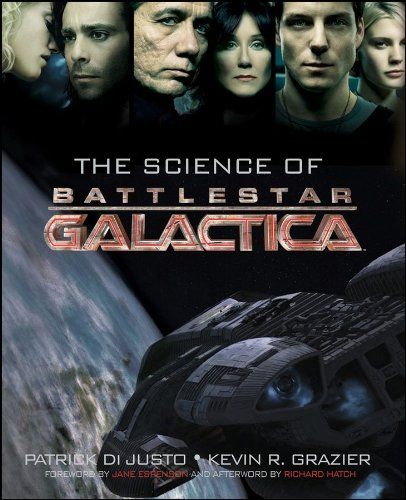
Battlestar Galactica is one of the defining, genre-changing science fiction shows of its, or perhaps any, time. The remake of the 1970s cult classic was sexy, sophisticated, and set a new standard for the science fiction shows and movies that will follow in its path. In addition to exploring staple concepts such as life, survival, politics and war, BSG reawakened its audience to science and its role in moral, ethical, and daily impact in our lives, especially given the technologically-driven era that we live in. “Writers were not allowed to jettison science for the sake of the story,” declares co-executive producer Jane Espenson in her foreword to the book. “Other than in specific instances of intentionally inexplicable phenomena, science was respected.” In an artful afterword, Richard Hatch (the original Apollo and Tom Zarek in the new series) concurs. “BSG used science not as a veneer, but as a key thematic component for driving many of the character stories… which is the art of science fiction.” The sustained use of complex, correct science as a plot element to the degree that was done in Battlestar Galactica is also a hallmark first. This is the topic of the new book The Science of Battlestar Galactica, newly released from Wiley Books, and written by Kevin R. Grazier, the very science advisor who consulted with the BSG writing staff on all things science, with a contribution from Wired writer Patrick DiJusto. Now, for the first time, everyone from casual fans to astrophysicists can gain insight into the research used to construct major stories and technology of the show—and learn some very cool science along the way. Our review of The Science of Battlestar Galactica (and our 100th blog post!) under the “continue reading” cut.

What is life? Seriously. I’m not asking one of those hypothetical existential questions that end up discussed ad nauseum in a dorm room at 3 AM. I’m asking the central question that Battlestar Galactica, and much of science fiction, is based around. The shortest section of The Science of Battlestar Galactica, “Life Began Out Here,” is its most poignant. No matter the conflict, subplot or theme explored on BSG, they ultimately reverted back to the idea of what constituted a living being, and what rights, if any, those beings possessed. It all boils down to cylons. What are they made of? How do their brains (potentially) work? How much information can they contain, and how is it processed from one dead cylon to its next incarnation? How could a cylon and a human mate successfully, and is their offspring (Hera Agathon) the Mitochondrial Eve of that society? How did they evolve? What is the biological difference between raiders, centurions, and humanoid cylons? Who can forget the ew gross factor of Boomer plugging her arm into the cylon computer system, but how could she do that, especially when she was made to act, feel and think as a human being? A brief, smart discussion on spontaneous evolution and basic biology gives way to a thoughtful evocation of our own efforts with artificial intelligence, and the responsibilities that it engenders. Take a look at the website of the MIT iGem Program, an annual competition to design biological systems that will operate in living cells from standard toolkits. Do some of their creations, including bacteria that eat industrial pollutants and treat lactose intolerance, constitute life, and are our own Cybernetic Life Nodes not too far away? The section ends in a fascinating debate over who we are more akin to—the humans of the Battlestar universe (as is widely assumed) or cylons. The answer would surprise you.
The middle of The Science of Battlestar Galactica, composed of “The Physics of Battlestar Galactica” and “The Twelve Colonies and The Rest of Space” reads largely like my college physics textbook, only with far cooler sample problems. If Apollo and Starbuck both launch their vipers at the same time and Starbuck coasts past Apollo, according to special relativity, who is moving? In perhaps the greatest implementation of Einstein’s famous theory in science fiction, special relativity explains how Starbuck could explain that she wasn’t a Cylon when she returned unharmed from the dead, and why her viper looked brand new. A special look at radiation particularly interested me, with a chemistry background, as it thoroughly delved into the chemistry and physics of radiation, heat-seeking missile weapons, DNA damage, and the power of nuclear weapons, both with fictional examples (the destruction of Caprica) and real (Japan and Chernobyl). The chapters on relativity (E=mc2) and the Lorentz Contraction reminded me of a seminar on dark energy that we covered at the Hollywood Laserium presented a year ago by Dr. Charles Baltay (NOT Baltar!), the man who was responsible for Pluto losing its planetary status. At the time, a lot of the concepts seemed a bit esoteric, but having read this book, are now elementary. Did you know, for example, that a supernova explosion is so powerful, it can briefly cause iron and other atoms remaining in the star to fuse into every naturally occurring element in the periodic table? Nifty, eh? Astronomy buffs, amateur and experienced, will enjoy the section on space, with a preamble on the formation of our galaxy and star systems to the 12 different planets of the Colonies, and how that many habitable planets could all be packed into such a dense area (see companion map below).
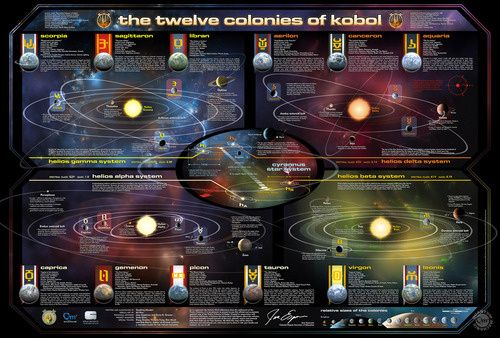
With perfect timing for the publication of The Science of BSG, Kevin R. Grazier and co-executive producer Jane Espenson have teamed up to create a plausible astronomy map of the 12 colonies of Battlestar Galactica. Find a larger, interactive version here.

One of the more fun aspects to watching BSG was the cornucopia of weapons, toys, and other electronics used by both humans and Cylons, a subject explored in the most meaty section of the whole book, “Battlestar Tech.” This includes a discussion of propulsion and how the Galactica’s jump drive might work, artificial gravity, a great chapter on the vipers and raptors as effective weapons, and positing how it is that Six was able to infiltrate the colonial computer infrastructure… besides the obvious, that is. I really enjoyed learning about Faraday cages, tachyon particles, brane cosmology, and what a back door is in computer programming, terms you can bet I will be throwing out casually at my next hoity-toity dinner party. The next time you rewatch an episode, and hear Mr. Gaeta utter a directive such as “We have a Cylon raider, CBDR, bearing 123 carom 45,” not only will you know exactly what he’s saying relative to the cartesian coordinates of the BSG space universe, but how this information is used to operate the complicated three-dimensional space system that the pilots have to operate in. Finally, critics such as myself of the dilapidated corded phones used aboard the Galactica will be interested to find out why they may have actually been a good idea in protecting the fleet from Cylon detection.
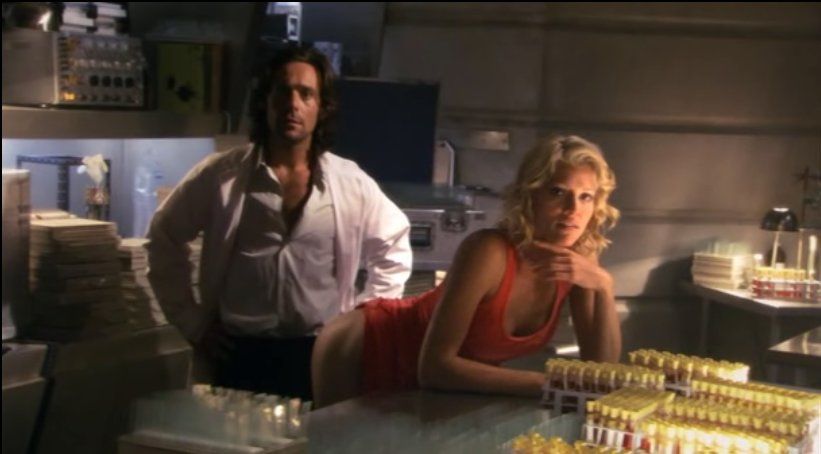
The ultimate selling point of this book is its ability to present material that will appeal to all fractions of a very diverse audience. The writing style is fluid, clever, informative and appropriately humorous in the way one would expect of a geeky sci-fi book (highlighted by a chapter on Cylon composition and detection thereof by Dr. Baltar written in dialogue format between an omniscient scientist and a smart-aleck fanboy). In fact, the co-authors merge their styles well enough so as to imagine that only one person wrote the book. Part textbook, part entertainment, part series companion, The Science of Battlestar Galactica is concomitantly smart, complicated, approachable and difficult—it does not surprise us one bit that in the couple of short months since its wide release, talk of numerous literary awards has already been circling. In between lessons on basic biology, astrophysics, energy and basic engineering are sprinkled delightful vignettes of actual on-set problem solving involving science. My favorites included plausible ways Cylons could download their information as they’re reborn (get ready for some serious computer-speak here!), an excellent explanation of Dr. Baltar’s mysterious Cylon detector, radiation and the difference between uninhabitable ‘dead Earth’ and barely habitable New Caprica, and the revelation by Dr. Grazier of how he had to—in a frantic period of 24 sleepless hours—construct a theory as to how the FTL drive works for an episode-specific reason. Much like the show it is based on, this book asks as many questions as it answers, most notably on social parables within our own world. Are we on our way to building Cylon artificial intelligence? Could our computer infrastructure ever get compromised like the ones on Caprica? Would we ever be able to travel to parallel universes, and what would be the implications of life forms besides our own? How might they even detect our presence?
Read our in-depth interview with Kevin R. Grazier here
Join our our Facebook fan page for a special giveaway commemorating the release of The Science of Battlestar Galactica and our 100th blog post. Now if you’ll excuse me, having read and absorbed this illuminating volume, I have been inspired to go and watch the entire series from start to finish all over again!
~*ScriptPhD*~
*****************
ScriptPhD.com covers science and technology in entertainment, media and advertising. Hire our consulting company for creative content development.
Subscribe to free email notifications of new posts on our home page.
]]>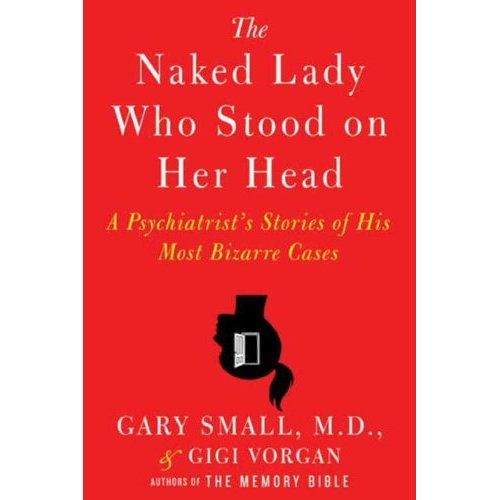
One of the most captivating books of 2010 was not a gory science-fiction thriller or a gripping end-of-the world page-turner, though its subject matter is equally engrossing and out of the ordinary. It is about somewhat crazy people doing crazy things as seen through the lenses of the man that has been treating them for decades. The Naked Lady Who Stood On Her Head is the first psych ward memoir, a tale of a curious doctor/scientist and his most extreme, bizarre, and sometimes touching cases from the nation’s most prestigious neurology centers and universities. Included in ScriptPhD.com’s review is a podcast interview with Dr. Small, as well as the opportunity to win a free autographed copy of his book. Our end-of-the year science library pick is under the “continue reading” cut.

Gary Small is a very unlikely candidate for the chaos that many of us confuse with a psych ward. Whether it was the frantic psych consults on ER or fond remembrance of Jack Nicholson and his cohorts in One Flew Over The Cuckoo’s Nest, most of us have a natural association of psychiatry with insanity or pandemonium. Meeting Dr. Small in real life is the antithesis of these scenarios. Warm, welcoming, serene and genuinely affable, his voice translates directly from the pages of his latest book. Told in chronological order—starting with
a young, curious, inexperienced intern at Harvard’s Massachussetts General Hospital to his tenure as a world-renowned neuroscientist at UCLA—The Naked Lady Who Stood On Her Head feels like an enormous learning and growing experience for Dr. Small, his patients, and the reader.
The scene plays out like a standard medical drama or movie. In the beginning, the young, bright-eyed, bushy-tailed, trepidatious doctor is exploring while learning the ropes on duty. There is, in the self-titled chapter, literally a naked lady standing on her head in the middle of a Boston psych ward. Dr. Small is the only doctor that can cure her baffling ailment, but in doing so, only begins to peel away at what is really troubling her. There is a bevvy of inexplicable fainting schoolgirls afflicting the Boston suburbs. Only through a fresh pair of eager eyes is the root cause attained, a cause that to this day sets the standard for mass hysteria treatment nationwide. And there is a mute hip painter from Venice beach, immobile for weeks until Small, fighting the rigid senior attendings, gets to the unlikely diagnosis. As the book, and Dr. Small’s career, flourishes, we meet a WebMD mom, a young man literally blinded by his family’s pressure, a man whose fiancé’s obsession with Disney characters resurfaces a painful childhood secret, and Dr. Small’s touching story of having to watch as the mentor he introduced at the book’s beginning hires him as a therapist so that he can diagnose his teacher’s dementia. Ultimately, all of the characters of The Naked Lady Who Stood on Her Head, and Dr. Small’s dedication and respect, have a common thread. They are real, they are diverse, and they are us. Psych patients are not one-dimensional figments of a screenwriter’s imagination. They are the brother who has childhood trauma, the friend with a dysfunctional or abusive family, the husband or wife with a rare genetic predisposition, and all of us are but one degree away from the abnormal behavior that these conditions can ignite. In his book, Dr. Small has pulled back the curtain of a notoriously secretive and mysterious field. It’s a riveting reveal, and absolutely worth an appointment. The Naked Lady Who Stood On Her Head has been optioned by 20th Century Fox, and may be coming to your televisions soon!
Podcast Interview
In addition to his latest novel, Gary Small is the author of the best-selling global phenomenon The Memory Bible: An Innovative Strategy For Keeping Your Brain Young and a regular contributor to The Huffington Post (several excellent recent articles can be found here and here). His seminal research on Alzheimer’s disease, aging and brain training has appeared in recent articles in NPR and Newsweek. A seminal brain imaging study recently completed in his laboratory garnered worldwide media attention for suggesting that Google searching can stimulate the brain and literally keep aging brains agile. Dr. Small regularly updates his research and musings on his personal blog.
ScriptPhD.com sat down for a one-on-one podcast with Dr. Small and discussed inspiration for the book, and how it conveys the inner thought process of a psychiatrist through their many interesting cases. In our podcast, we discuss how media and on-screen portrayal of psychiatrists contribute to people’s perceptions of the field, how the themes of empathy and humanity are indellibly woven into case studies, the challenges and fullfillment of psychiatry and the contribution of pop culture in modern psychoses.
~*ScriptPhD*~
*****************
ScriptPhD.com covers science and technology in entertainment, media and advertising. Hire our consulting company for creative content development. Subscribe to free email notifications of new posts on our home page.

As Comic-Con winds down on the shortened Day 4, we conclude our coverage with two panels that exemplify what Comic-Con is all about. As promised, we dissect the “Comics Design” panel of the world’s top logo designers deconstructing their work, coupled with images of their work. We also bring you an interesting panel of ethnographers, consisting of undergraduate and graduate student, studying the culture and the varying forces that shape Comic-Con. Seriously, they’re studying nerds! Finally, we are delighted to shine our ScriptPhD.com spotlight on new sci-fi author Charles Yu, who presented his new novel at his first (of what we are sure are many) Comic-Con appearance. We sat down and chatted with Charles, and are pleased to publish the interview. And of course, our Day 4 Costume of the Day. Comic-Con 2010 (through the eyes of ScriptPhD.com) ends under the “continue reading” cut!
Comics Design

We are not ashamed to admit that here at ScriptPhD.com, we are secret design nerds. We love it, particularly since good design so often elevates the content of films, television, and books, but is a relatively mysterious process. One of THE most fascinating panels that we attended at Comic-Con 2010 was on the design secrets behind some of your favorite comics and book covers. A panel of the world’s leading designers revealed their methodologies (and sometimes failures) in the design process behind their hit pieces, lifting the shroud of secrecy that designers often envelop themselves in. An unparalleled purview into the mind of the designer, and the visual appeal that so often subliminally contributes to the success of a graphic novel, comic, or even regular book. We do, as it turns out, judge books by their covers.
As promised, we revisit this illuminating panel, and thank Christopher Butcher, co-founder of The Toronto Comic Arts Festival and co-owner of The Beguiling, Canada’s finest comics bookstore. Chris was kind enough to provide us with high-quality images of the Comics Design panel’s work, for which we at ScriptPhD.com are grateful. Chris had each of the graphic artists discuss their work with an example of design that worked, and design that didn’t (if available or so inclined). The artist was asked to deconstruct the logo or design and talk about the thought process behind it.
Mark Ciarello – (art + design director at DC Comics)
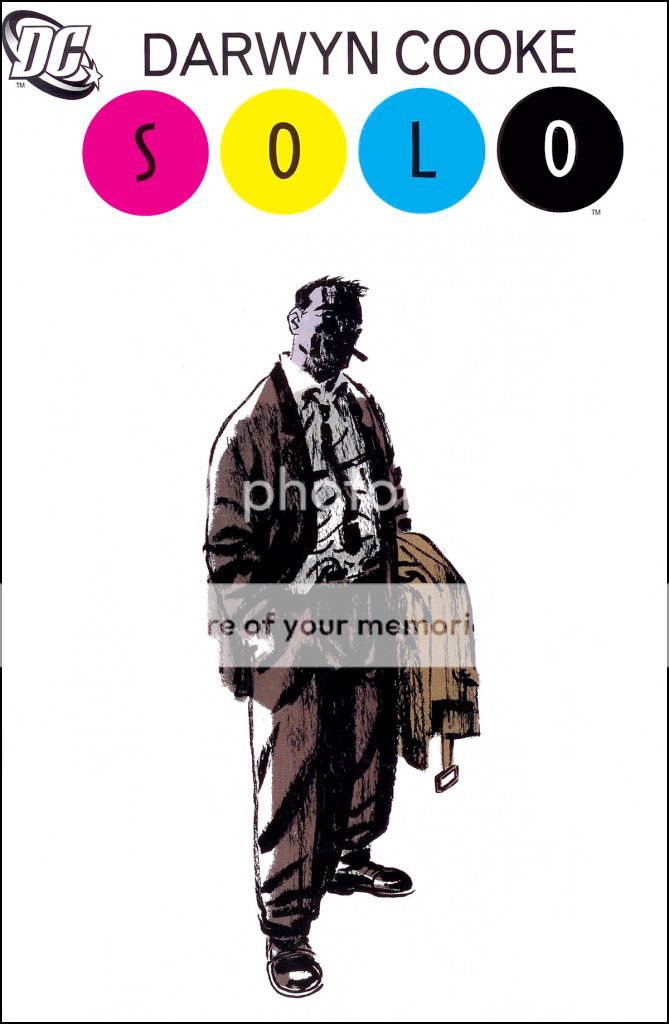
Mark chose to design the cover of this book with an overall emphasis on the individual artist. Hence the white space on the book, and a focus on the logo above the “solo” artist.
Adam Grano – (designer at Fantagraphics)
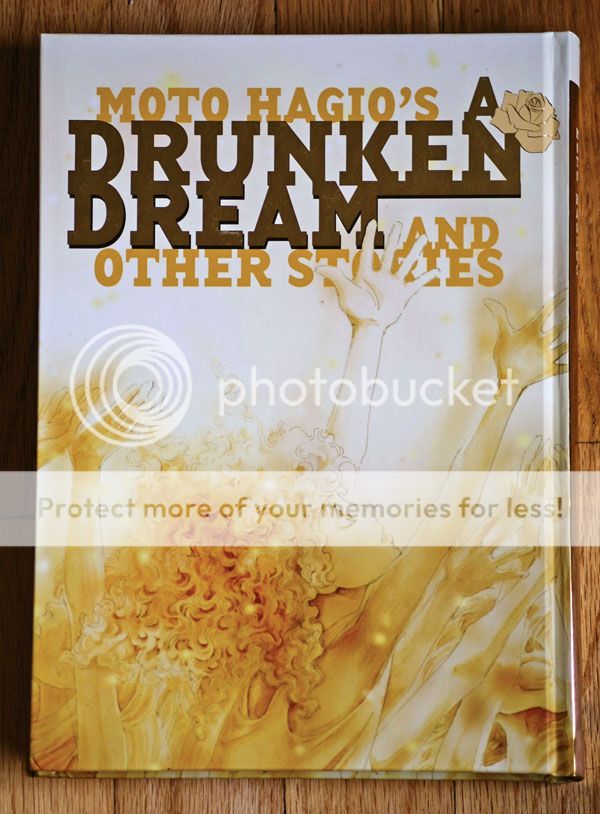
Adam took the title of this book quite literally, and let loose with his design to truly emphasize the title. He called it “method design.” He wanted the cover to look like a drunken dream.
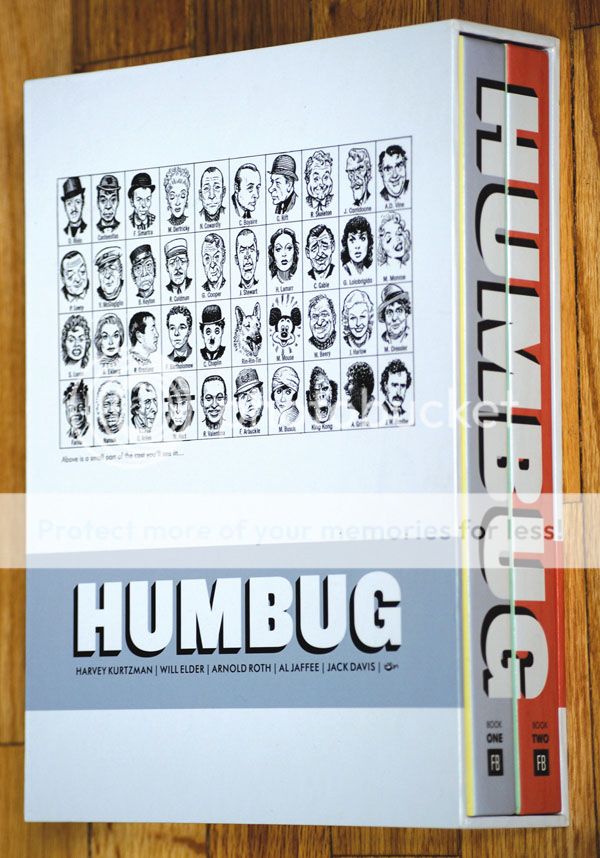
For the Humbug collection, Grano tried hard not to impress too much of himself (and his tastes) in the design of the cover. He wanted to inject simplicity in a project that would stand the test of time, because it was a collector’s series.
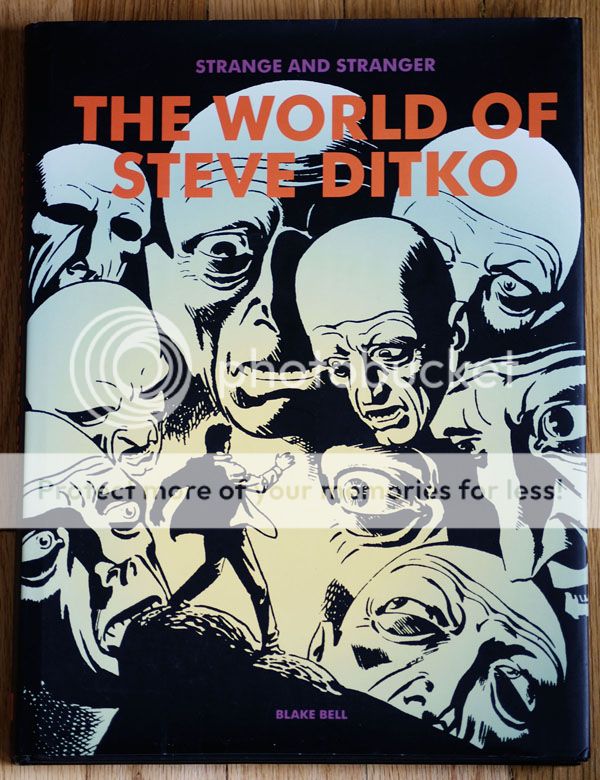
Grano considered this design project his “failure.” It contrasts greatly with the simplicity and elegance of Humbug. He mentioned that everyone on the page is scripted and gridded, something that designers try to avoid in comics.
Chip Kidd – (designer at Random House)
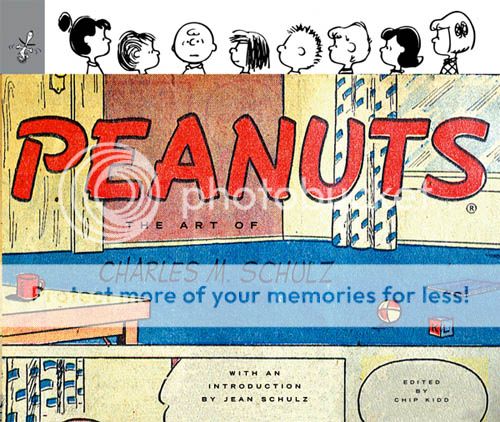
Chip Kidd had the honor of working on the first posthumous Peanuts release after Charles M. Schultz’s death, and took to the project quite seriously. In the cover, he wanted to deconstruct a Peanuts strip. All of the human element is taken out of the strip, with the characters on the cover up to their necks in suburban anxiety.
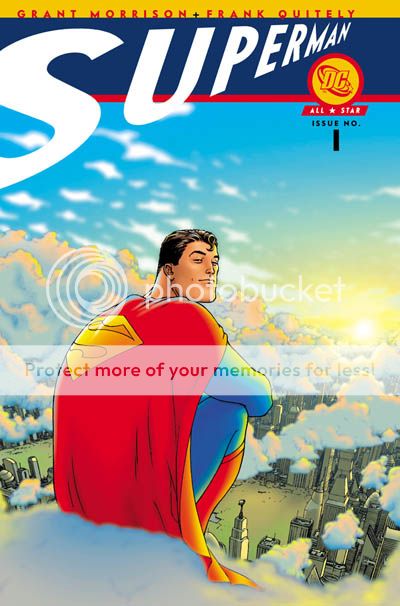
Kidd likes this cover because he considers it an updated spin on Superman. It’s not a classic Superman panel, so he designed a logo that deviated from the classic “Superman” logo to match.
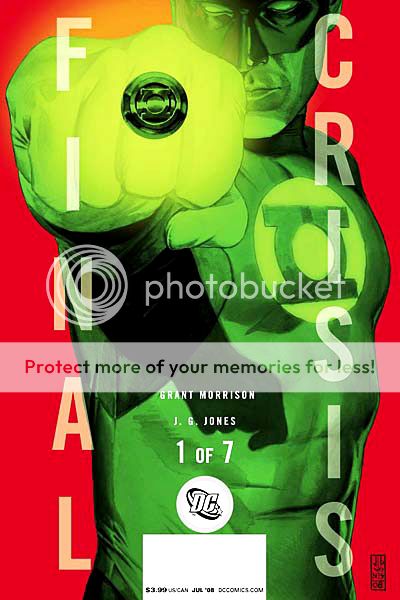
Kidd chose this as his design “failure”, but not the design itself. The cover represents one of seven volumes, in which the logo pictured disintegrates by the seventh issue, to match the crisis in the title. Kidd’s only regret here is that he was too subtle. He wishes he’d chosen to start the logo disintegration progression sooner, as there’s very little difference between the first few volumes.
Fawn Lau – (designer at VIZ)

Fawn was commissioned to redesign this book cover for an American audience. Keeping this in mind, and wanting the Japanese animation to be more legible for the American audience, she didn’t want too heavy-handed of a logo. In an utterly genius stroke of creativity, Lau went to an art store, bought $70 worth of art supplies, and played around with them until she constructed the “Picasso” logo. Clever, clever girl!
Mark Siegel – (First Second Books)
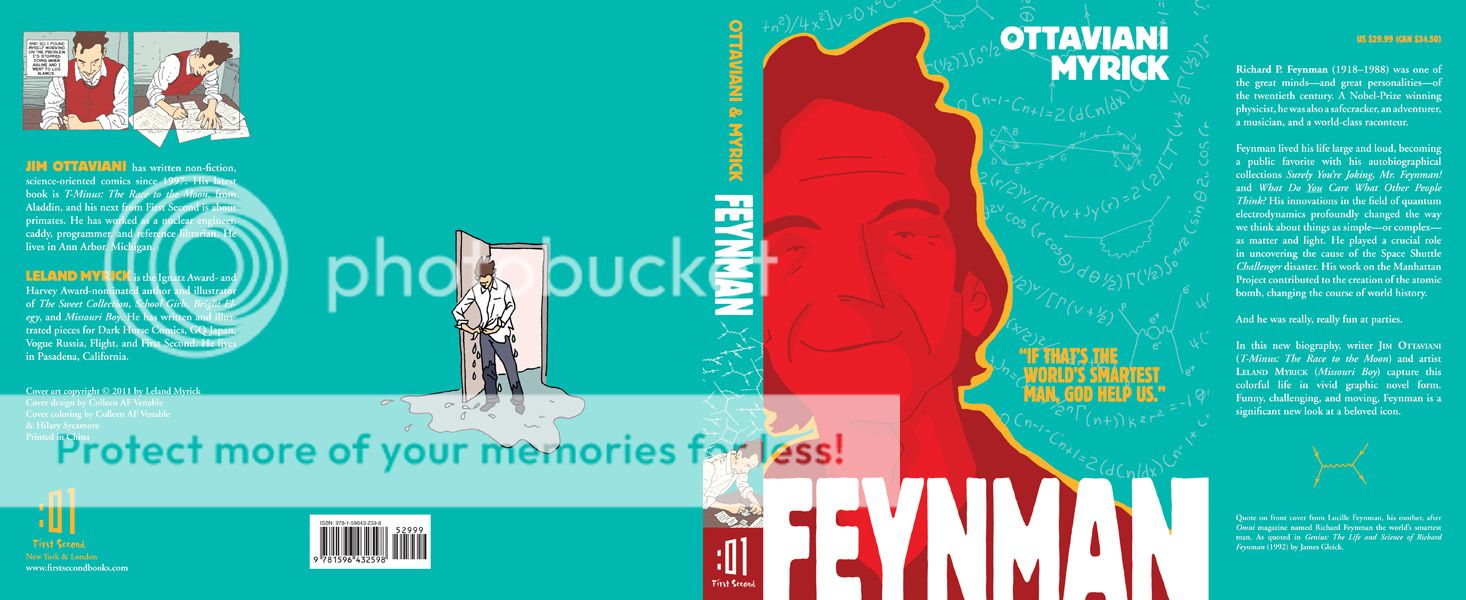
Mark Siegel was hired to create the cover of the new biography Feynman, an eponymous title about one of the most famous physicists of all time. Feynman was an amazing man who lived an amazing life, including a Nobel Prize in physics in 1965. His biographer, Ottaviani Myrick, a nuclear physicist and speed skating champion, is an equally accomplished individual. The design of the cover was therefore chosen to reflect their dynamic personalities. The colors were chosen to represent the atomic bomb and Los Alamos, New Mexico, where Feynman assisted in the development of The Manhattan Project. Incidentally, the quote on the cover – “If that’s the world’s smartest man, God help us!” – is from Feynman’s own mother.
Keith Wood – (Oni Press)

Wood remarked that this was the first time he was able to do design on a large scale, which really worked for this project. He chose a very basic color scheme, again to emphasize a collection standing the test of time, and designed all the covers simultaneously, including color schemes and graphics. He felt this gave the project a sense of connectedness.
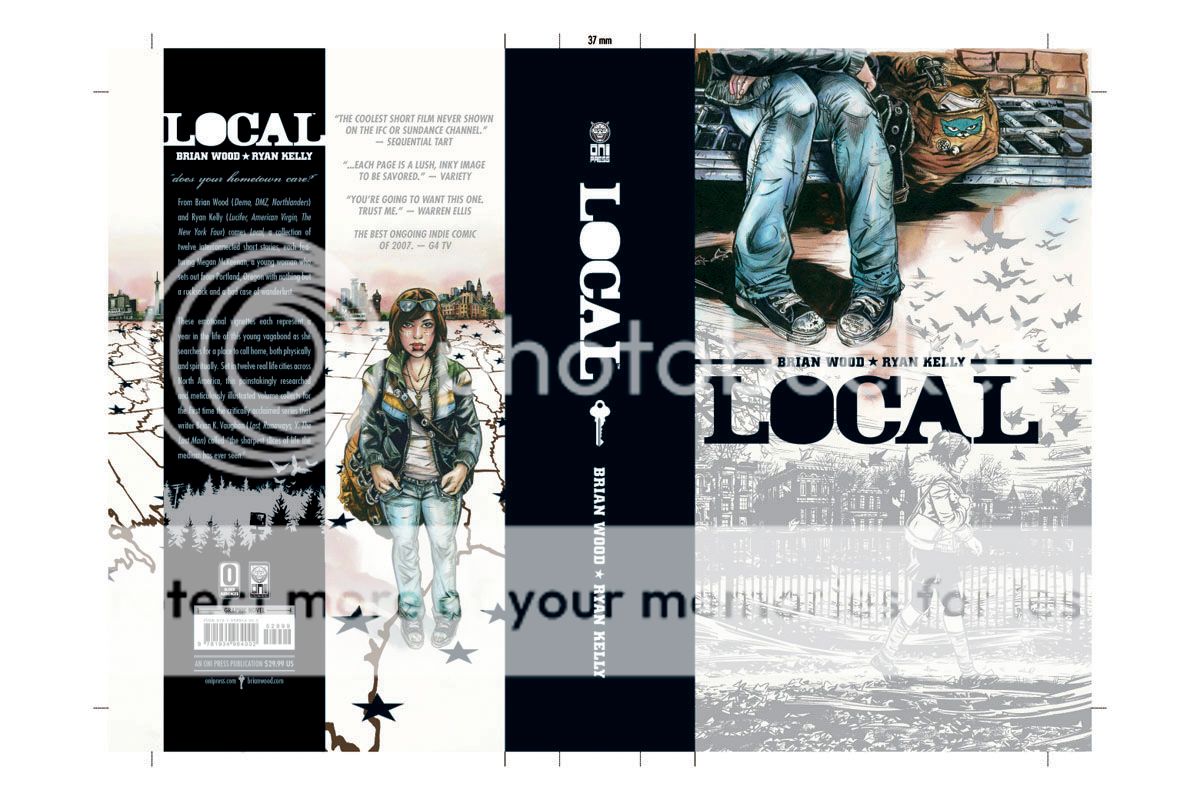
Wood chose a pantone silver as the base of this design with a stenciled typeface meant to look very modern. The back of the cover and the front of the cover were initially going to be reversed when the artists first brought him the renderings. However, Wood felt that since the book’s content is about the idea of a girl’s traveling across the United States, it would be more compelling and evocative to use feet/baggage as the front of the book. He was also the only graphic artist to show a progression of 10-12 renderings, playing with colors, panels and typeface, that led to the final design. He believes in a very traditional approach to design, which includes hand sketches and multiple renderings.
The Culture of Popular Things: Ethnographic Examinations of Comic-Con 2010

Each year, for the past four years, Comic-Con ends on an academic note. Matthew J. Smith, a professor at Wittenberg University in Ohio, takes along a cadre of students, graduate and undergraduate, to study Comic-Con; the nerds, the geeks, the entertainment component, the comics component, to ultimately understand the culture of what goes on in this fascinating microcosm of consumerism and fandom. By culture, the students embrace the accepted definition by famous anthropologist Raymond J. DeMallie: “what is understood by members of a group.” The students ultimately wanted to ask why people come to Comic-Con in general. They are united by the general forces of being fans; this is what is understood in their group. After milling around the various locales that constituted the Con, the students deduced that two ultimate forces were simultaneously at play. The fan culture drives and energizes the Con as a whole, while strong marketing forces were on display in the exhibit halls and panels.
Maxwell Wassmann, a political economy student at Wayne State University, pointed out that “secretly, what we’re talking about is the culture of buying things.” He compared Comic-Con as a giant shopping mall, a microcosm of our economic system in one place. “If you’ve spent at least 10 minutes at Comic-Con,” he pointed out, “you probably bought something or had something tried to be sold to you. Everything is about marketing.” As a whole, Comic-Con is subliminally designed to reinforce the idea that this piece of pop culture, which ultimately advertises an even greater subset of pop culture, is worth your money. Wassmann pointed out an advertising meme present throughout the weekend that we took notice of as well—garment-challenged ladies advertising the new Green Hornet movie. The movie itself is not terribly sexy, but by using garment-challenged ladies to espouse the very picture of the movie, when you leave Comic-Con and see a poster for Green Hornet, you will subconsciously link it to the sexy images you were exposed to in San Diego, greatly increasing your chances of wanting to see the film. By contrast, Wassmann also pointed out that there is a concomitant old-town economy happening; small comics. In the fringes of the exhibition center and the artists’ space, a totally different microcosm of consumerism and content exchange.

Kane Anderson, a PhD student at UC Santa Barbara getting his doctorate in “Superheroology” (seriously, why didn’t I think of that back in graduate school??), came to San Diego to observe how costumes relate to the superhero experience. To fully absorb himself in the experience, and to gain the trust of Con attendees that he’d be interviewing, Anderson came in full costume (see above picture). Overall, he deduced that the costume-goers, who we will openly admit to enjoying and photographing during our stay in San Diego, act as goodwill ambassadors for the characters and superheroes they represent. They also add to the fantasy and adventure of Comic-Con goers, creating the “experience.” The negative side to this is that it evokes a certain “looky-loo” effect, where people are actively seeking out, and singling out, costume-wearers, even though they only constitute 5% of all attendees.
Tanya Zuk, a media masters student from the University of Arizona, and Jacob Sigafoos, an undergraduate communications major at Wittenberg University, both took on the mighty Hollywood forces invading the Con, primarily the distribution of independent content, an enormous portion of the programming at Comic-Con (and a growing presence on the web). Zuk spoke about original video content, more distinctive of new media, is distributed primarily online. It allows for more exchange between creators and their audience than traditional content (such as film and cable television), and builds a community fanbase through organic interaction. Sigafoos expanded on this by talking about how to properly market such material to gain viral popularity—none at all! Lack of marketing, at least traditional forms, is the most successful way to promote a product. Producing a high-quality product, handing it off to friends, and promoting through social media is still the best way to grow a devoted following.
And speaking of Hollywood, their presence at Comic-Con is undeniable. Emily Saidel, a Master’s student at NYU, and Sam Kinney, a business/marketing student at Wittenberg University, both took on the behemoth forces of major studios hawking their products in what originally started out as a quite independent gathering. Saidel tackled Hollywood’s presence at Comic-Con, people’s acceptance/rejection thereof, and how comics are accepted by traditional academic disciplines as didactic tools in and of themselves. The common thread is a clash between the culture and the community. Being a member of a group is a relatively simple idea, but because Comic-Con is so large, it incorporates multiple communities, leading to tensions between those feeling on the outside (i.e. fringe comics or anime fans) versus those feeling on the inside (i.e. the more common mainstream fans). Comics fans would like to be part of that mainstream group and do show interest in those adaptations and changes (we’re all movie buffs, after all), noted Kinney, but feel that Comic-Con is bigger than what it should be.
But how much tension is there between the different subgroups and forces? The most salient example from last year’s Con was the invasion of the uber-mainstream Twilight fans, who not only created a ruckus on the streets of San Diego, but also usurped all the seats of the largest pavilion, Hall H, to wait for their panel, locking out other fans from seeing their panels. (No one was stabbed.) In reality, the supposed clash of cultures is blown out of proportion, with most fans not really feeling the tension. To boot, Seidel pointed out that tension isn’t necessarily a bad thing, either. She gave a metaphor of a rubber band, which only fulfills its purpose with tension. The different forces of Comic-Con work in different ways, if sometimes imperfectly. And that’s a good thing.
Incidentally, if you are reading this and interested in participating in the week-long program in San Diego next year, visit the official website of the Comic-Con field study for more information. Some of the benefits include: attending the Comic-Con programs of your choice, learning the tools of ethnographic investigation, and presenting the findings as part of a presentation to the Comics Arts Conference. Dr. Matthew Smith, who leads the field study every year, is not just a veteran attendee of Comic-Con, but also the author of The Power of Comics.
COMIC-CON SPOTLIGHT ON: Charles Yu, author of How To Live Safely in a Science Fictional Universe.
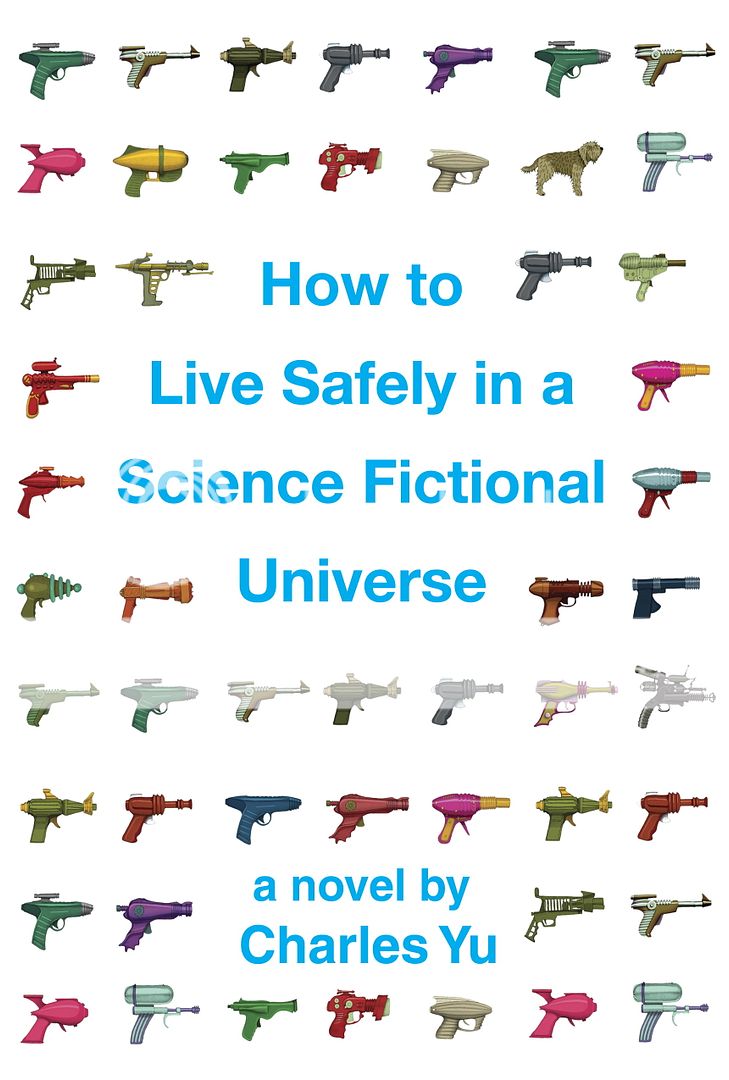
Here at ScriptPhD.com, we love hobnobbing with the scientific and entertainment elite and talking to writers and filmmakers at the top of their craft as much as the next website. But what we love even more is seeking out new talent, the makers of the books, movies and ideas that you’ll be talking about tomorrow, and being proud to be the first to showcase their work. This year, in our preparation for Comic-Con 2010, we ran across such an individual in Charles Yu, whose first novel, How To Live Safely in a Science Fictional Universe premieres this fall, and who spoke about it at a panel over the weekend. We had an opportunity to have lunch with Charles in Los Angeles just prior Comic-Con, and spoke in-depth about his new book, along with the state of sci-fi in current literature. We’re pretty sure Charles Yu is a name science fiction fans are going to be hearing for some time to come. ScriptPhD.com is proud to shine our 2010 Comic-Con spotlight on Charles and his debut novel, which is available September 7, 2010.
How To Live Safely in a Science Fictional Universe is the story of a son searching for his father… through quantum-space time. The story takes place on Minor Universe 31, a vast story-space on the outskirts of fiction, where paradox fluctuates like the stock market, lonely sexbots beckon failed protagonists, and time travel is serious business. Every day, people get into time machines and try to do the one thing they should never do: try to change the past. That’s where the main character, Charles Yu, time travel technician, steps in. Accompanied by TAMMY (who we consider the new Hal), an operating system with low self-esteem, and a nonexistent but ontologically valid dog named Ed, Charles helps save people from themselves. When he’s not on the job, Charles visits his mother (stuck in a one-hour cycle, she makes dinner over and over and over) and searches for his father, who invented time travel and then vanished.
Questions for Charles Yu
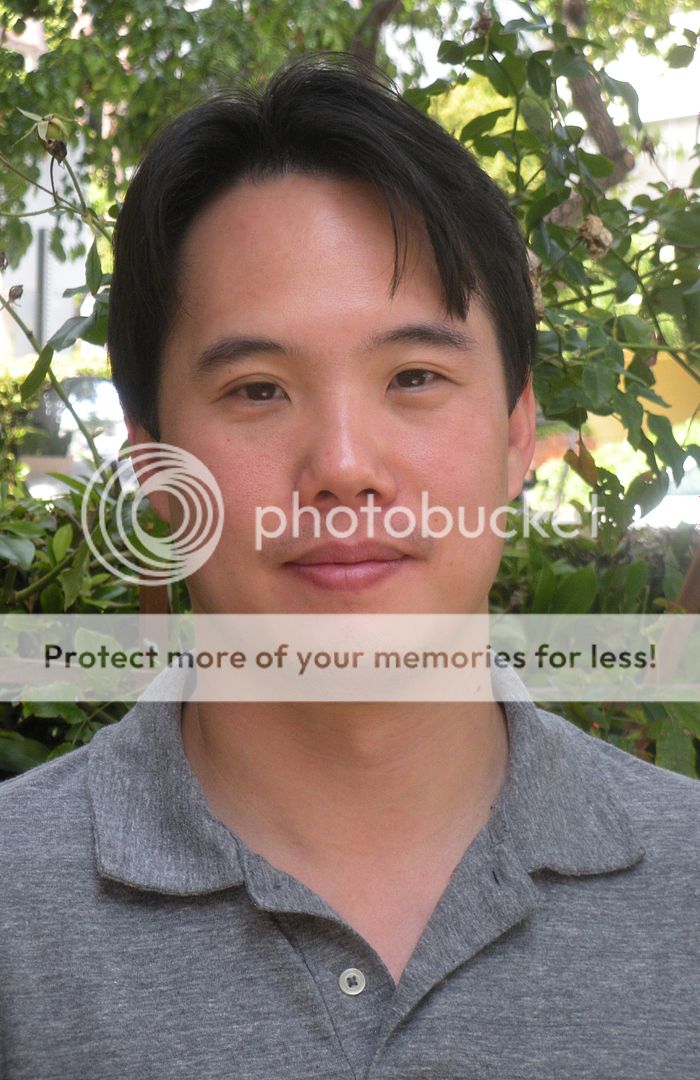
ScriptPhD.com: Charles, the story has tremendous traditional sci-fi roots. Can you discuss where the inspiration for this came from?
Charles Yu: Well the sci-fi angle definitely comes from being a kid in the 80s, when there were blockbuster sci-fi things all over the place. I’ve always loved [that time], as a casual fan, but also wanted to write it. I didn’t even start doing that until after I’d graduated from law school. I did write, growing up, but I never wrote fiction—I didn’t think I’d be any good at it! I wrote poetry in college, minored in it, actually. Fiction and poetry are both incredibly hard, and poetry takes more discipline, but at least when I failed in my early writing, it was a 100 words of failure, instead of 5,000 words of it.
SPhD: What were some of your biggest inspirations growing up (television or books) that contributed to your later work?
CY: Definitely The Foundation Trilogy. I remember reading that in the 8th grade, and I remember spending every waking moment reading, because it was the greatest thing I’d ever read. First of all, I was in the 8th grade, so I hadn’t read that many things, but the idea that Asimov created this entire self-contained universe, it was the first time that I’d been exposed to that idea. And then to have this psychohistory on top, it was kind of trippy. Psychohistory is the idea that social sciences can be just as rigorously captured with equations as any physical science. I think that series of books is the main thing that got me into sci-fi.
SPhD: Any regrets about having named the main character after yourself?
CY: Yes. For a very specific reason. People in my life are going to think it’s biographical, which it’s very much not. And it’s very natural for people to do that. And in my first book of short stories, none of the main characters was named after anyone, and still I had family members that asked if that was about our family, or people that gave me great feedback but then said, “How could you do that to your family?” And it was fiction! I don’t think the book could have gotten written had I not left that placeholder in, because the one thing that drove any sort of emotional connection for the story for me was the idea of having less things to worry about. The other thing is that because the main character is named after you, as you’re writing the book, it acts as a fuel or vector to help drive the emotional completion.
SPhD: In the world of your novel, people live in a lachrymose, technologically-driven society. Any commentary therein whatsoever on the technological numbing of our own current culture?
CY: Yes. But I didn’t mean it as a condemnation, in a sense. I wouldn’t make an overt statement about technology and society, but I am more interested in the way that technology can sometimes not connect people, but enable people’s tendency to isolate themselves. Certainly, technology has amazing connective possibilities, but that would have been a much different story, obviously. The emotional plot-level core of this book is a box. And that sort of drove everything from there. The technology is almost an emotional technology that [Charles, the main character] has invented with his dad. It’s a larger reflection of his inability to move past certain limitations that he’s put on himself.
SPhD: What drives Charles, the main character of this book?
CY: What’s really driving Charles emotionally is looking for his dad. But more than that, is trying to move through time, to navigate the past without getting stuck in it.
SPhD: Both of his companions are non-human. Any significance to that?
CY: It probably speaks more to my limitations as a writer [laughs]. That was all part of the lonely guy type that Charles is being portrayed as. If he had a human with him, he’d be a much different person.
SPhD: The book abounds in scientific jargon and technological terminology, which is par for the course in science fiction, but was still very ambitious. Do you have high expectations of the audience that will read this book?
CY: Yeah. I was just reading an interview where the writer essentially said “You can never go wrong by expecting too much [of your audience].” You can definitely go wrong the other way, because that would come off as terrible, or assuming that you know more. But actually, my concerns were more in the other direction, because I knew I was playing fast and loose with concepts that I know I don’t have a great grasp of. I’m writing from the level of amateur who likes reading science books, and studied science in college—an entertainment layreader. My worry was whether I was BSing too much [of the science]. There are parts where it’s clearly fictional science, but there are other parts that I cite things that are real, and is anyone who reads this who actually knows something about science going to say “What the heck is this guy saying?”
SPhD: How To Live… is written in a very atavistic, retro 80s style of science fiction, and really reminded me of the best of Isaac Asimov. How do you feel about the current state of sci-fi literature as relates to your book?
CY: Two really big keys for me, and things I was thinking about while writing [this book], were one, there is kind of a kitchiness to sci-fi, and I think that’s kind of intentional. It has a kind of do-it-yourself aesthetic to it. In my book, you basically have a guy in the garage with his dad, and yes the dad is an engineer, but it’s in a garage without great equipment, so it’s not going to look sleek, you can imagine what it’s going to look like—it’s going to look like something you’d build with things you have lying around in the garage. On the other hand, it is supposed to be this fully realized time machine, and you’re not supposed to be able to imagine it. Even now, when I’m in the library in the science-fiction section, I’ll often look for anthologies that are from the 80s, or the greatest time travel stories from the 20th Century that cover a much greater range of time than what’s being published now. It’s almost like the advancement of real-world technology is edging closer to what used to be the realm of science fiction. The way that I would think about that is that it’s not exploting what the real possibility of science fiction is, which is to explore a current world or any other completely strange world, but not a world totally envisionable ten years from now. You end up speculating on what’s possible or what’s easily extrapollatable from here; that’s not necessarily going to make for super emotional stories.
Charles Yu is a writer and attorney living in Los Angeles, CA.
Last, but certainly not least, is our final Costume of the Day. We chose this young ninja not only because of the coolness of his costume, but because of his quick wit. As we were taking the snapshot he said, “I’m smiling, you just can’t see it.” And a check mate to you, young sir.

Incidentally, you can find much more photographic coverage of Comic-Con on our Facebook fan page. Become a fan, because this week, we will be announcing Comic-Con swag giveaways that only Facebook fans are eligible for.
~*ScriptPhD*~
*****************
ScriptPhD.com covers science and technology in entertainment, media and advertising. Hire our consulting company for creative content development.
Subscribe to free email notifications of new posts on our home page.
]]>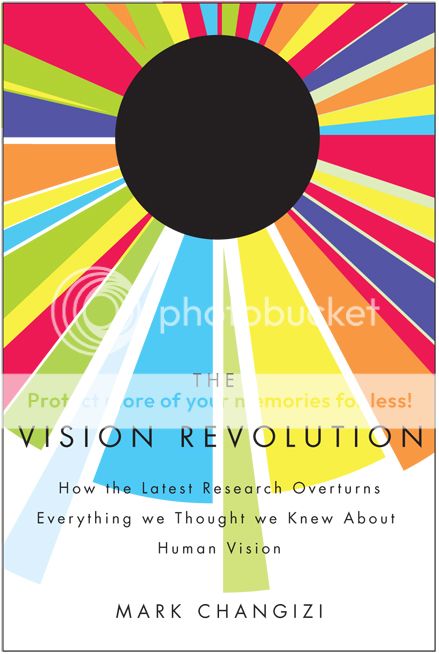
Dr. Mark Changizi, a cognitive science researcher, and professor at Rensselaer Polytechnic Institute, is one of the most exciting rising stars of science writing and the neurobiology of popular culture phenomena. His latest book, The Vision Revolution, expounds on the evolution and nuances of the human eye—a meticulously designed, highly precise technological marvel that allows us to have superhuman powers. You heard me right; superhuman! X-ray vision, color telepathy, spirit reading, and even seeing into the future. Dr. Changizi spoke about these ideas, and how they might be applied to everything from sports stars with great hand-eye coordination to modern reading and typeface design with us in ScriptPhD.com’s inaugural audio podcast. He also provides an exclusive teaser for his next book with a guest post on the surprising mindset that makes for creative people. Read Dr. Changizi’s guest post and listen to the podcast under the “continue reading” cut.
You are an idea-monger. Science, art, technology—it doesn’t matter which. What matters is that you’re all about the idea. You live for it. You’re the one who wakes your spouse at 3am to describe your new inspiration. You’re the person who suddenly veers the car to the shoulder to scribble some thoughts on the back of an unpaid parking ticket. You’re the one who, during your wedding speech, interrupts yourself to say, “Hey, I just thought of something neat.” You’re not merely interested in science, art or technology, you want to be part of the story of these broad communities. You don’t just want to read the book, you want to be in the book—not for the sake of celebrity, but for the sake of getting your idea out there. You enjoy these creative disciplines in the way pigs enjoy mud: so up close and personal that you are dripping with it, having become part of the mud itself.
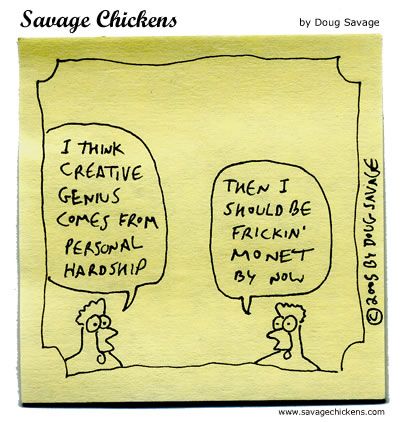
Enthusiasm for ideas is what makes an idea-monger, but enthusiasm is not enough for success. What is the secret behind people who are proficient idea-mongers? What is behind the people who have a knack for putting forward ideas that become part of the story of science, art and technology? Here’s the answer many will give: genius. There are a select few who are born with a gift for generating brilliant ideas beyond the ken of the rest of us. The idea-monger might well check to see that he or she has the “genius” gene, and if not, set off to go monger something else.
Luckily, there’s more to having a successful creative life than hoping for the right DNA. In fact, DNA has nothing to do with it. “Genius” is a fiction. It is a throw-back to antiquity, where scientists of the day had the bad habit of “explaining” some phenomenon by labeling it as having some special essence. The idea of “the genius” is imbued with a special, almost magical quality. Great ideas just pop into the heads of geniuses in sudden eureka moments; geniuses make leaps that are unfathomable to us, and sometimes even to them; geniuses are qualitatively different; geniuses are special. While most people labeled as a genius are probably somewhat smart, most smart people don’t get labeled as geniuses.
I believe that it is because there are no geniuses, not, at least, in the qualitatively-special sense. Instead, what makes some people better at idea-mongering is their style, their philosophy, their manner of hunting ideas. Whereas good hunters of big game are simply called good hunters, good hunters of big ideas are called geniuses, but they only deserve the moniker “good idea-hunter.” If genius is not a prerequisite for good idea-hunting, then perhaps we can take courses in idea-hunting. And there would appear to be lots of skilled idea-hunters from whom we may learn.
There are, however, fewer skilled idea-hunters than there might at first seem. One must distinguish between the successful hunter, and the proficient hunter – between the one-time fisherman who accidentally bags a 200 lb fish, and the experienced fisherman who regularly comes home with a big one (even if not 200 lbs). Communities can be creative even when no individual member is a skilled idea-hunter. This is because communities are dynamic evolving environments, and with enough individuals, there will always be people who do generate fantastically successful ideas. There will always be successful idea-hunters within creative communities, even if these individuals are not skilled idea-hunters, i.e., even if they are unlikely to ever achieve the same caliber of idea again. One wants to learn to fish from the fisherman who repeatedly comes home with a big one; these multiple successful hunts are evidence that the fisherman is a skilled fish-hunter, not just a lucky tourist with a record catch.
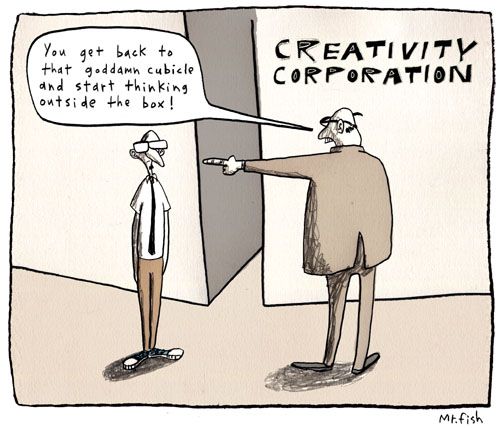
And what is the key behind proficient idea-hunters? In a word: aloofness. Being aloof—from people, from money, from tools, and from oneself—endows one’s brain with amplified creativity. Being aloof turns an obsessive, conservative, social, scheming status-seeking brain into a bubbly, dynamic brain that resembles in many respects a creative community of individuals. Being a successful idea-hunter requires understanding the field (whether science, art or technology), but acquiring the skill of idea-hunting itself requires taking active measures to “break out” from the ape brains evolution gave us, by being aloof.
I’ll have more to say about this concept over the next year, as I have begun writing my fourth book, tentatively titled Aloof: How Not Giving a Damn Maximizes Your Creativity. (See here and here for other pieces of mine on this general topic.) In the meantime, given the wealth of creative ScriptPhD.com readers and contributors, I would be grateful for your ideas in the comment section about what makes a skilled idea-hunter. If a student asked you how to be creative, how would you respond?
Mark Changizi is an Assistant Professor of Cognitive Science at Rensselaer Polytechnic Institute in New York and the author of The Vision Revolution and The Brain From 25,000 Feet. More of Dr. Changizi’s writing can be found on his blog, Facebook Fan Page, and Twitter.
ScriptPhD.com was privileged to sit down with Dr. Changizi for a half-hour interview about the concepts behind his current book, The Vision Revolution, out in paperback June 10, the magic that is human ocular perception, and their applications in our modern world. Listen to the podcast below:
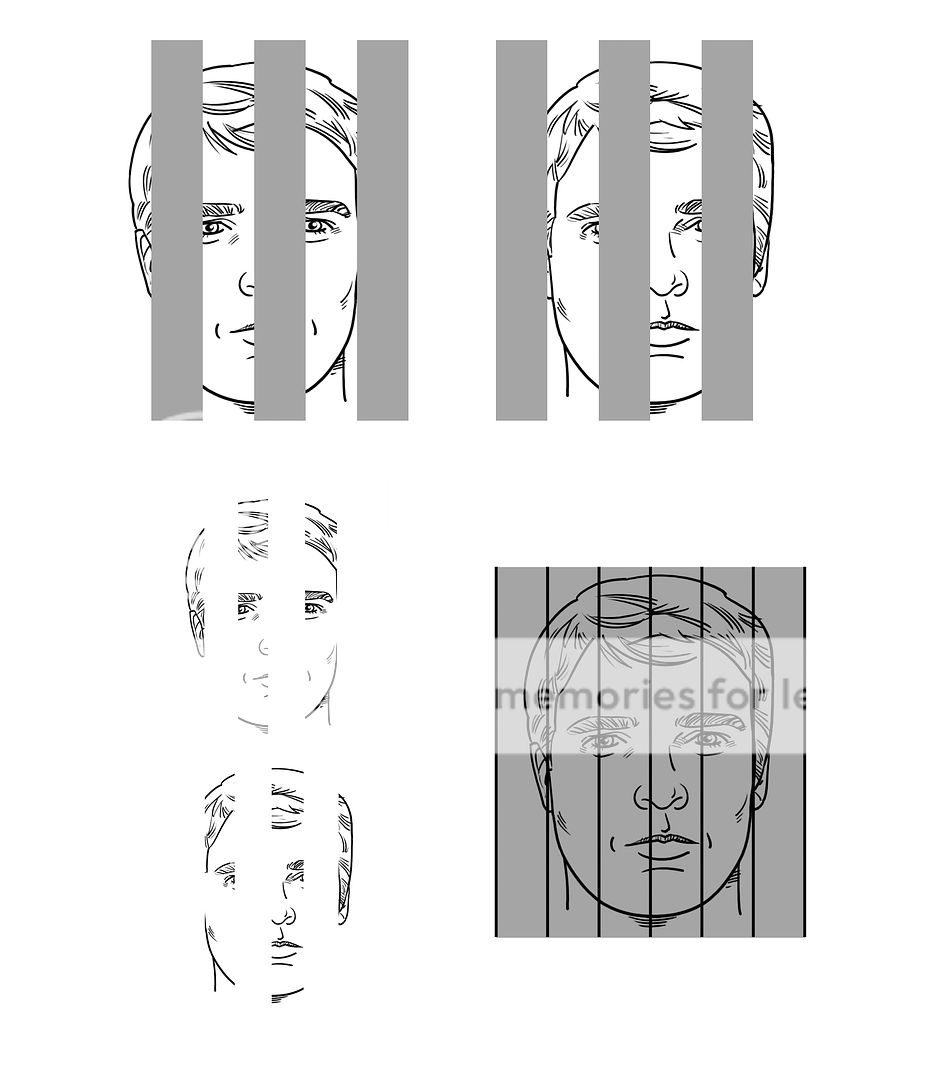
~*ScriptPhD*~
*****************
ScriptPhD.com covers science and technology
in entertainment, media and advertising. Hire our consulting company for creative content development.
Follow us on Twitter and our Facebook fan page. Subscribe to free email notifications of new posts on our home page.
]]>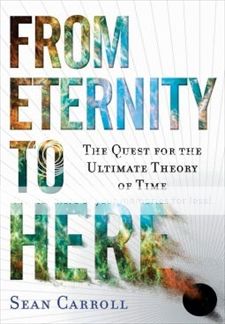
What is time? How does it work? Why is it immutably unidirectional (moving from the past and towards the future)? And most importantly, why does time exist at all? These are among the preeminent metaphysical questions to date for scientists and laypeople alike. Using the principles of entropy and universe expansion since the Big Bang, cosmologist Sean Carroll (recently profiled in the New York Times) hypothesizes about the arrow of time in a brilliant new book From Eternity to Here: The Quest for the Ultimate Theory of Time. In addition to reviewing the book, ScriptPhD.com’s in-house physics and astronomy guru, Stephen Compson, had an extraordinary opportunity to sit down with Dr. Carroll in his physics lab at Caltech University. In a stunningly in-depth, rich interview, they explored everything from the creation of our universe, to entropy, the time-space continuum, how physics and film intersect, and why the principles in Dr. Carroll’s book are important and topical for the general public to grasp. It’s rare to see this wide-ranging of a discussion on popular physics from such an authoritative researcher, so sit back, enjoy and click “continue reading” for more.
I first started writing for this site because I was excited about the relationship between fiction and physics, especially what they both can tell us about the nature of time. From The Time Machine to Groundhog Day, many of our movies have posed questions about moving outside the arrow of time. In another way, the recent popularity of movies with out-of-order chronology, like Pulp Fiction or Memento, have served to make the public more comfortable with non-traditional narratives. Since many of our questions about space and time originate with the work of Einstein, it’s worth mentioning that Virginia Woolf was one of Einstein’s early supporters and publishers in America, and that his work on relativity in turn clearly influenced writers like Woolf, Joyce, and Faulkner (both also published by Woolf at some point). Here in 2010, as we fire up the Large Hadron Collider in Switzerland, it seems that physics is due for another upheaval, which will no doubt have an impact on the way we tell stories.
That’s why I was so excited to get my hands on a copy of Dr. Sean Carroll’s latest book, From Eternity to Here: The Quest for the Ultimate Theory of Time. If you’re a fan of Stephen Hawking’s Brief History of Time, or you find yourself lurking in the physics section of your local book store, or you just want to learn what we know about time, this book is the definitive work of the moment.
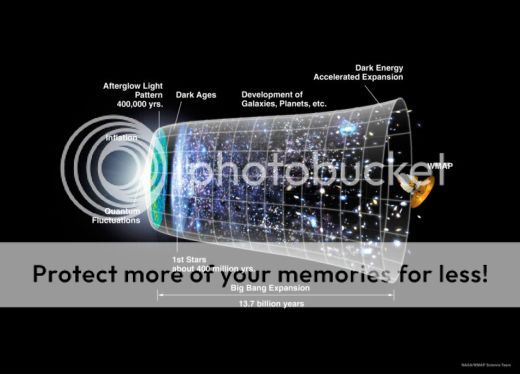
Sean Carroll is a respected professor of cosmology at Caltech University, and the recommendation quotes on the back of his book read like a who’s who of popular physics writing. The book is very readable, and anyone who can follow the byzantine plotline of Lost should be able to understand the ideas he presents. His theory has to do with the concept of entropy, the measure of the orderliness of the universe. Our universe went from a low entropy compressed state before the Big Bang to the expanding state of increasing entropy, in which we now live. The metaphor he often uses in the book is that you can make an omelet out of an egg (or you could drop the egg, or freeze it, or do any number of things), but once that omelet’s been cooked you can’t make it back into a raw egg. From Eternity to Here is an examination of why that is so, why time moves from past to future and not backwards (apparently this wasn’t obvious to scientists!).
The book is also a vehicle for Carroll to throw in his hat on cosmology’s Big Questions of how the universe was formed, how many universes there might be, and why the Big Bang could happen. What makes his work accessible to the armchair physicist is that he roots his ideas in examples you can find in your own kitchen and in diverse selections from popular culture, everything from science fiction to Dumb and Dumber.
As you’ll see in my interview with Dr. Carroll below, physicists today are struggling with the same questions about fate and free will that made Spiderman go emo. I tried to pin Carroll down on the answer, but he’s got better moves than Spidey when the conversation starts to turn toward the philosophical. Also, when you’re trying to ask a scientist at the top of his field about his work, chances are you’re going to assert something stupid in your questions at least once. I managed to do that about four times. But he answered the questions without making me feel like a complete idiot, which is, I think, what the book really does well. It’s informative without condescension (as Hawking’s work can sometimes feel). Carroll even manages to be funny (for a scientist). As physics marches forward to the tune of the Large Hadron Collider, we’ll need more books like From Eternity to Here to keep up with the research.
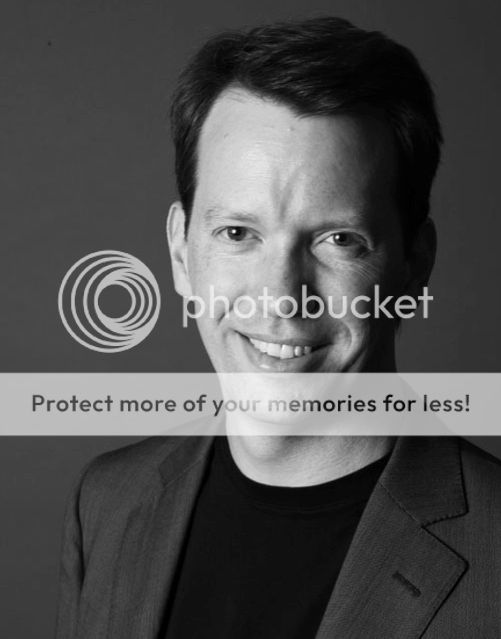
Interview With Sean Carroll:
ScriptPhD.com: How would you define Cosmology?
Sean Carroll: Cosmology is the study of the whole universe all at once. Cosmology looks at the big picture of what the universe is made of, where it came from, and how it’s been evolving.
SPhD: Your book deals a lot with time and with entropy, and dances around the issue of. Where does From Eternity to Here leave us in terms of our free will and what physics can tell us about that?
SC: I’m trying to reconcile the fact that physicists think there are laws of nature which are never broken and we obey those laws, but on the other hand we think that we’re able to make choices. I think both views are compatible with each other. The point is that we don’t know as much about the future as we know about the past. With the past we have a feeling that it’s set in stone, and that has to do with the fact that the entropy was lower, but the future is unknown to us. I think that’s the reason why we can feel and act as if we have free will.
It makes sense to think of ourselves as beings that have choices to make, because, even if all the pieces that we’re made of, all the particles and atoms and so forth, obey the laws of physics, we don’t know the state of all those particles. It makes no difference what those particles are doing because we don’t know, so we can act as if we have free will, and at the same time obey the laws of physics.
SPhD: Your book draws on examples from movies and TV shows. Are there any works in popular culture that come close to conveying our actual understanding of time and the universe?
SC: That’s a hard question. There are plenty of works that play with our understanding. My favorite is probably the movie Memento, by Christopher Nolan, it’s not science fiction but it uses time in a very interesting narrative technique, with flashbacks and reverse chronology. There’s also TV shows like Lost where you have time travel and alternate realities. They’re not trying very hard to stick to the laws of physics, but they’re trying to be logical and consistent. I wouldn’t turn to movies or TV shows to learn about how physicists think of the nature of time, but they’re certainly very useful in prodding us to think about time in imaginative ways.
SPhD: What do you make of the idea that American movies often boil down to a question of fate versus destiny?
SC: I think it’s a classic dilemma, are we fated to do something or do we have choices in the matter? And the laws of physics have the same dilemma built into them, on the one hand, we all obey the laws of physics, on the other hand we think we can make choices. I don’t think that the large-scale choices that we make are in any way fated, I was not destined to become a physicist. But if I knew the velocities and positions of every particle in the universe, I could figure it out. It makes a great dramatic tension to feel that something is inevitable and watch the hero fight against that.
SPhD: Quantum mechanics tells us that there is something to the act of observing the positions and velocities of those particles, would you say that if you had observed all the particles that you might miss your chance to become a physicist?
SC: Quantum mechanics makes things more complicated because it says that when we observe something, we can’t know exactly what it is we’re seeing, we can only observe the probability of something happening. I don’t think that changes the basic story because we don’t know the whole system so it doesn’t really matter anyway. Large scale human activities are impossible to predict in practice even if they could be perfectly predictable in principal.
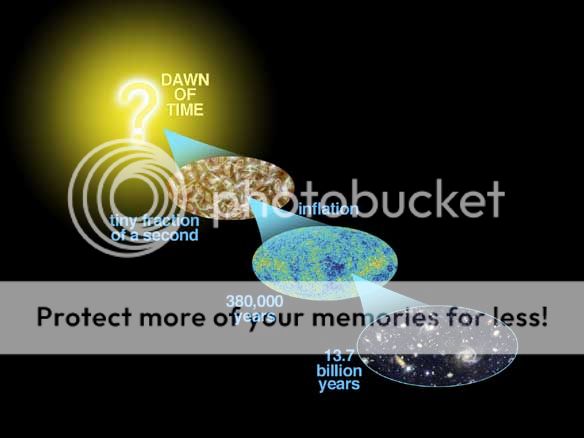
SPhD: Do you think that our existence as intelligent beings is a cosmic accident? And would you consider that to be a low-entropy result?
SC: That’s a very interesting question, actually. Entropy goes up as the universe evolves, but simplicity and complexity are harder to predict and understand. The universe starts out very simple, and it’s going to end very simple. The complexity happens in between. There are senses in which the existence of complexity in our current universe arises because entropy is increasing. When entropy was very low there was no complexity, once entropy hits its maximum value there will be no complexity, but in between interesting things can happen. So I don’t think it’s crazy to wonder if the existence of life and consciousness arose because entropy is increasing. A lot of details still need to be worked out around that, but something like that might be on the right track.
SPhD: In your LA Times Interview, you talked about how many of your colleagues take the progression of time from past to future for granted because that’s the way it works in our universe. It reminded me of the geocentrist debate, where we want to see ourselves as the center of things because this is the universe we live in, so of course it must be that way. What can we learn from the mistakes scientists have made in the past, and what do we have coming up in terms of experiments that will shed new light on cosmology?
SC: My own personal philosophy about that is that we need to remove ourselves from the universe that we are actually in and ask ourselves what we think the universe should be like if we couldn’t make any direct observations. Let’s say we knew the laws of physics, but we didn’t know the configuration of the universe, there’s no reason from that thought experiment that we would end up with something like the Big Bang, there’s no model that could predict something like that, yet. We’re not on the verge of answering that question, that’s a hard question. We’re still groping our way towards some better ideas, but we’re doing lots of experiments that should help us out. We’re doing cosmology experiments, learning more about the background radiation that’s left over from the Big Bang. We’re doing particle physics experiments, the Large Hadron Collider in Geneva hopefully will teach us something about the laws of physics that we don’t know yet. So it’s not a short term project, it’s a long-term project, but the important thing is that we’re absolutely making progress.
SPhD: The LA Times also asked you if God exists in a multiverse and you said we shouldn’t need God to explain physical phenomena. If some being in the multiverse did create our low-entropy universe, could we distinguish that being from what we think of as God?
SC: I’m not sure how you would ever know that that’s what happened. There’s no reason to think that it can’t be explained by purely material things going on. Scientists like to look for the simplest possible theory that fits the data, and we don’t have that theory yet in cosmology, but there’s certainly nothing in the structure of our theory that indicates that we won’t be able to get a purely physical theory of everything.
SPhD: If either a Being or physical phenomena did create our universe in its low-entropy state, what kind of energy would it take to accomplish that task?
SC: The good news is you don’t need that much energy to create the universe. One of the secret lessons of general relativity, Einstein’s theory of gravity, is that if the universe is closed—it sort of curls back on itself—the total energy of the universe is zero. That seems crazy to us because there’s a lot of stuff in the universe, but the positive contributions to energy and the negative contributions to energy exactly cancel, as long as the universe is closed. So to make a new baby universe, to take the old space-time and pinch off an entirely new space-time, costs no energy at all. That doesn’t mean it’s easy to do, it just doesn’t require a lot of resources to do it.
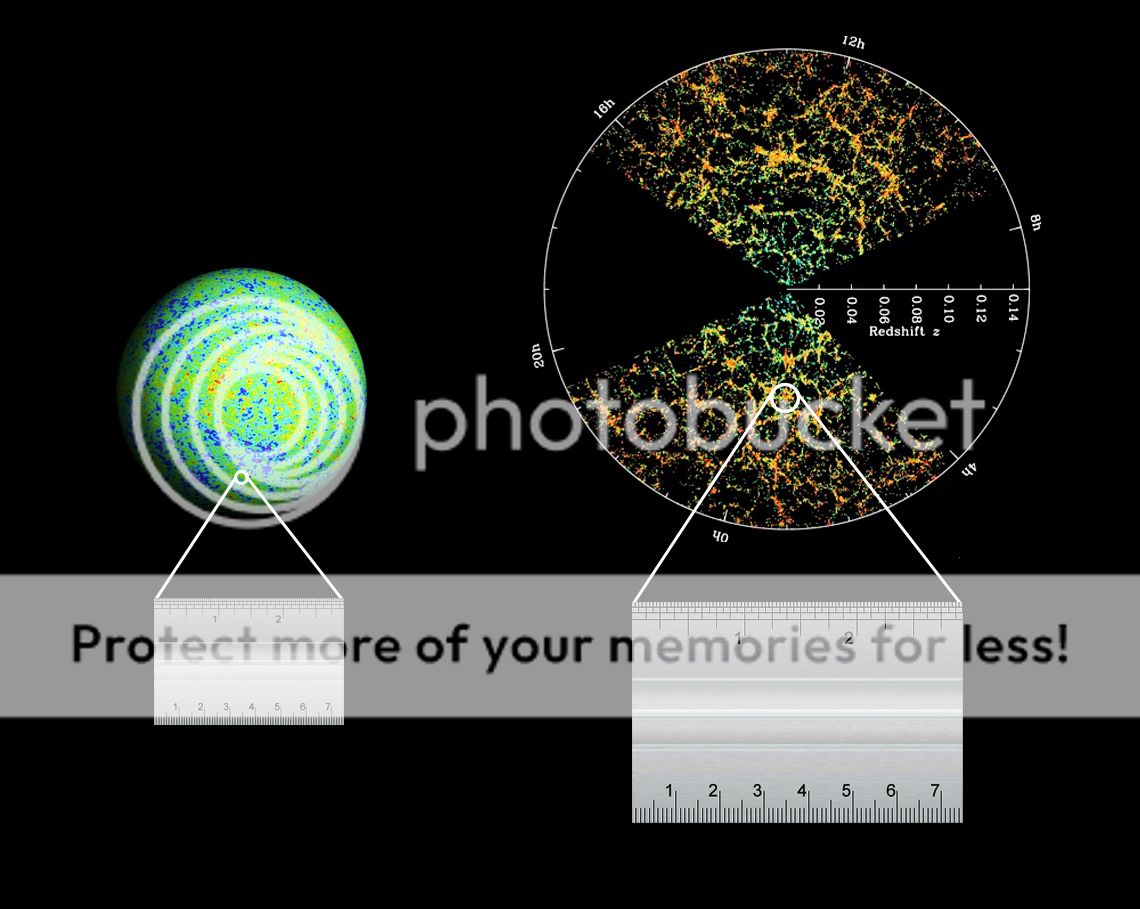
SPhD: If the speed of light remains constant throughout space-time, shouldn’t it be possible for us to map the expansion of the universe with the history of light?
SC: That’s basically what we do. We take light that you can observe today coming from different sources, and those sources are of different ages because they’re at different distances. The far away ones are much older, have emitted their light long ago, and the closer ones have emitted their light more recently. That spectrum of time is actually very useful to us, if we only saw the universe as it exists today, in some sense we would know less. This way we can actually see back into the past.
SPhD: Do you think we’ll eventually have a complete map of our universe?
SC: We won’t ever know everything there is to know about our universe simply because, given that the speed of light is a finite number, there will always be some things that the universe won’t let us see, they’re simply too far away. The best we can hope to do is to put together a schematic picture that makes sense of the part of the universe that we can see. It won’t ever be complete, there will always be more to learn and more to figure out, but we should be able to understand the basic outline of the universe in which we live. We’re not there yet.
SPhD: What do you think of film’s potential as a four-dimensional mapping tool?
SC: In the CGI era, you get to choose every single pixel that appears on your screen. I think visualization of space and time is certainly something we can do, but I don’t know that it’s been exploited anywhere near to what it could be. Flying through galaxies is nice, but it’s very hard to get the evolution of the universe right. We always want to show a picture of the universe from the outside, but we’re stuck inside. I hope that with technology we can put together representations of the universe from the inside, where you can see it expanding and get a more intuitive, hands-on feel for what’s going on.
SPhD: Since you mentioned Memento, how do movies that invert technology lay the groundwork for our understanding of space-time?
SC: There’s something very interesting about how we tell stories. Narrative certainly has the arrow of time, earlier things first, later things later, and that’s not always respected [by the storytellers]. Stories are told through some funny time order, and that’s always done with some purpose, it’s challenging our assumptions for interesting reasons. Because of physics, and because of entropy and the arrow of time, we have this idea that the past moves to the future in a certain way. That the effect comes second and the cause comes first. It goes both ways, you can understand a little bit about how the narrative techniques work by understanding how the physics work, but you can also appreciate going into the physics and where it comes from in some way by really trying to wrap your mind around some of the more interesting narratives out there.
SPhD: It seems that entropy is in some way dependent on decisions made by the observer. As we follow our world lines and make decisions, aren’t we actually decreasing entropy within our light-cones?
SC: That’s not true, actually. There’s a confusing discussion about how dependent on individual observers entropy is, and that’s partially because there’s more than one definition of entropy. One way of defining entropy is by measuring how much you don’t know about a system, but clearly that’s not something we could physically understand. But there’s also a definition of entropy that has nothing to do with our knowledge: that the universe can be in a more likely configuration or a less likely configuration. We human beings are unusual structures in the universe because we attempt to create a little bit of order around us, we attempt to remember things, to organize our local environments. But the way that we do so greatly increases the entropy of the universe as a whole. We spread out a lot of extra entropy into the universe by our activities here on earth. We are not anywhere near equilibrium, a state of very high entropy, but if the environment were anywhere near high entropy we would not be here.
SPhD: Why is that?
SC: What we think of as life, environments and information processing and metabolism, depends on the fact that entropy is low, overall. If entropy were high, nothing would happen, so we would not be able to organize our lives better. We can make our environment orderly by increasing the entropy of the universe, but if the entropy of the universe were already at its maximum we could not create order.
SPhD: Why did you write this book? Why is it important that the public understand cosmology?
SC: Time is something that a lot of people can relate to. We use time every day in our lives, and the amazing thing to me is that the way that time works is really dependent on the universe itself, dependent on the Big Bang. We’re all sort of living in the aftermath of that influential event. It’s a great route to thinking about some big ideas, some big abstract concepts that are still grounded in things that everyone can understand.
SPhD: What would you say is the thinnest part of your argument?
SC: The major point of the book, that the arrow of time ultimately depends on cosmology and conditions near the Big Bang, is ultimately solid. That’s something that, not everyone agrees, but they should agree. The puzzle, then, is why was it like that? Why did the early universe have such a low entropy? I don’t think we know very much about that yet, I have my favorite idea and it’s in the book, but I’m not wedded to that idea, I think we have a long way to go before we can be confident. We have a good handle on the problem, we don’t have a good handle on the solution yet.
SPhD: Experimentally?
SC: It has to be a give and take between experiments and theory. We don’t know what experiments to do until we have a theoretical basis to ask questions, but we don’t know which theories are right until we have experiments to test them.
SPhD: What’s the single project in physics that you’re the most excited about today?
SC: As a theorist, I’m trying to figure out what happened around the time of the Big Bang. I think that’s plausible, we can really talk about it sensibly now whereas fifty years ago we couldn’t ask that question. So I’m hopeful, but it’s a hope based on optimism, not an experimental basis, yet. Experimentally I think it’s all about the Large Hadron Collider, that’s no secret. We don’t know what it’s going to tell us. One of the things about physics experiments is that we don’t know what the answers are ahead of time. But we’re looking into a space which is unknown, which we haven’t looked at before, so the chances are we’re going to find something surprising.
For you physics nerds that just can’t get enough space-time continuum jabber, we recommend Sean’s one-hour TED Talk lecture at the University of Sydney on nature of time, the origin of entropy, and how what happened before the Big Bang might be responsible for the arrow of time we observe today. Part I and Part II.
Stephen Compson studied English and Physics at Pomona College. He writes fiction and screenplays and is currently working toward a Master of Fine Arts at UCLA’s School of Theater, Film & Television.
~*Stephen Compson*~
************************
ScriptPhD.com covers science and technology in entertainment, media and advertising. Hire our consulting company for creative content development.
Follow us on Twitter and our Facebook fan page. Subscribe to free email notifications of new posts on our home page.
]]>
He is one of the most popular and explosive (sometimes literally!) science columnists of our day. Since 2005, he has written the Popular Science blog Gray Matter. He has been willing to try virtually any chemistry experiment known to man, all in the interest of proving a theory and educating (and entertaining) a fortunate lay audience. He has created the most widely acclaimed periodic table ever, which has been replicated into posters, an actual table, playing cards, and now, a gorgeous full-color hardcover book. Who is this mad scientist I am referring to? Why, Theodore Gray, of course! For Day 3 of Science Week, ScriptPhD.com is thrilled to review his new book The Elements, an equal parts homage to chemistry and photography. Editor Jovana Grbić sat down with Theo in a candid, in-depth interview about his books, his favorite elements, and the responsibility science writers have to informing the public. More more content, please click “continue reading.”
It is a staple of every high school and college science class. Its familiar shape has stayed largely the same since 1869, when Siberian chemistry professor Dmitry Ivanovich Mendeleev first grouped chemicals together according to similar properties. It is indispensable to scientists of all disciplines, and has even inspired our very own ScriptPhD.com logo! It is, of course, the periodic table of the elements. There is an immense challenge in taking such a well-known, immutable scientific entity and making people see it in a way it has never been seen before. And to do so using photography and creative writing? To the moon, Alice! Yet in Theo Gray’s gorgeous new book The Elements, this is precisely what occurs—a rebirth for ruthenium, rhodium, radium, rubidium… and the rest. Each page (as seen below) is elegantly laid out with gallery quality photography, sometimes of compounds, minerals and applications that would surprise you, and fascinating stories that turn each element into its own unique chapter in the hallowed Bible of chemical history.
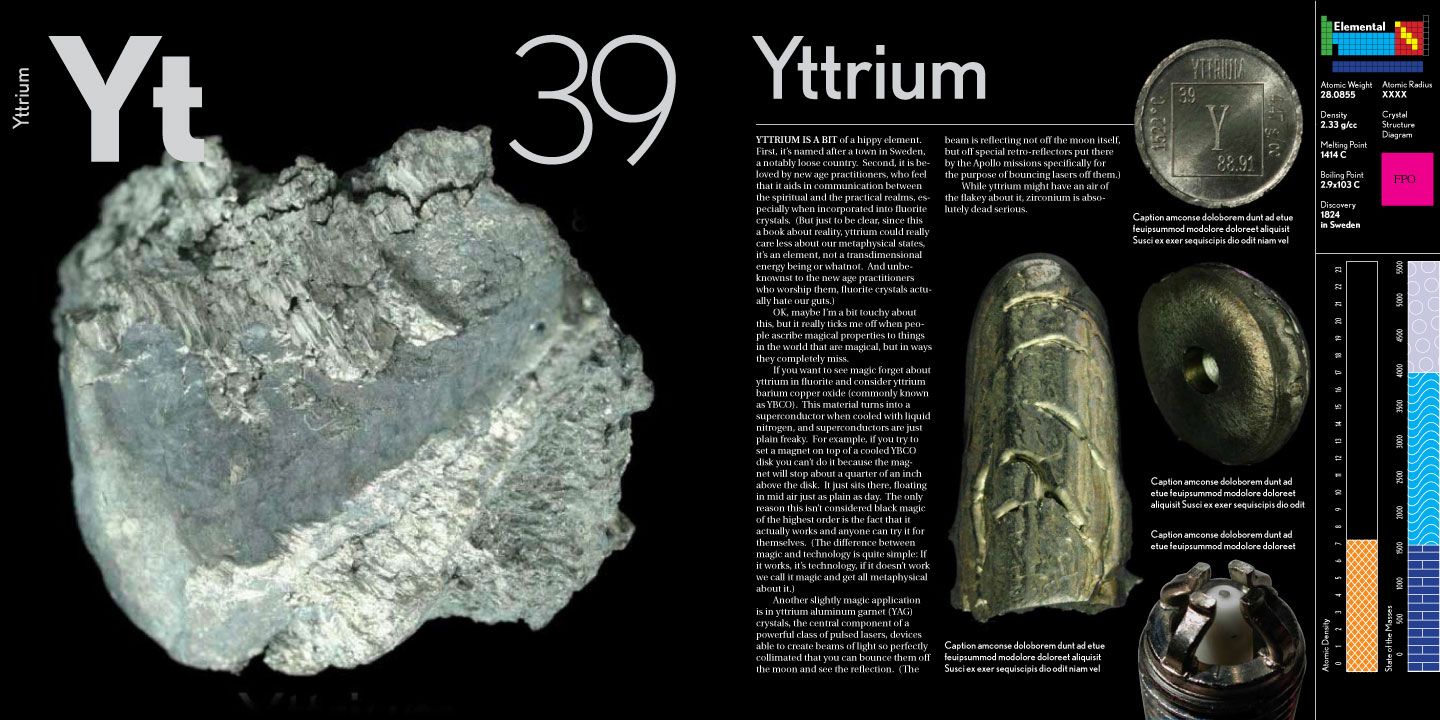
Chemistry is the central science. But as you get to know the periodic table better while reading The Elements, it quickly becomes apparent that chemistry is also a science with much character. It is smelly, as is the case with sulfur. It’s sometimes a mouthful, as in the longest element name, praseodymium. It helps us control mood swings, as is the case with lithium. It helps us when we’ve overdone it at the weekend barbeque, as is the case with bismuth subsalicylate. Perhaps you know it better as Pepto-Bismol. Chemistry helps doctors and scientists to save lives. A radioactive isotope of technetium is naturally bone-seeking, and helps radiologists diagnose everything from compound fractures to cancer. Should you ever need to get an MRI, chances are you’ll have to consume a contrast dye composed of the element gadolinium. Sometimes, a fickle element both saves and takes lives. Chlorine, for example, has saved hundreds of millions of lives as an antiseptic and disinfectant in small quantities, yet is poisonous in large quantities. Likewise, selenium is an essential nutrient, but toxic in large doses. Gray also pays tribute to a sullied, marginalized element that has gotten a bad rap over the years: zirconium. If you’re considering proposing to that special someone, zirconium, like the overpriced aged carbon of which it is a replica, is near the top of the hardness scale and equally as beautiful for a fraction of the cost! On an unrelated note, thallium is one of the most effective poisons on the periodic table, owing to common symptoms that few doctors can pinpoint. For utter destruction on a wanton scale, however, one need look no further than uranium:
What is most unique and attractive about The Elements is the lengths to which it goes to envelop artists and creatives in the world of science, many of whom would be surprised how much of their craft they owe to chemistry. Iconic photographers like Ansel Adams would be nothing without magnesium, which has been widely used in camera flashes to provide light. For you font and graphic design nerds out there, one thing the typeface documentary Helvetica omitted is the magic that lies in the combination of antimony, lead and tin—it expands when solidified from a molten state. Voila! 650 years (and counting) of movable typeface. Film buffs who have enjoyed movies like Avatar (and the upcoming Hubble 3D) on IMAX would be interested to know that IMAX projectors use 15 kW short-arc Xenon projector lamps. Jimmy Hendrix, Stevie Ray Vaughan, Eric Clapton, ZZ Top, BB King, and countless other guitar legends would be silenced were it not for the obscure element samarium, which in combination with cobalt is used as a magnet for electric guitar pickups. And for all of you DJs and musical purists who agree with The ScriptPhD that no musical sound is sweeter and sharper than that of a vinyl record, did you know that phonograph needle tips are made of osmium?
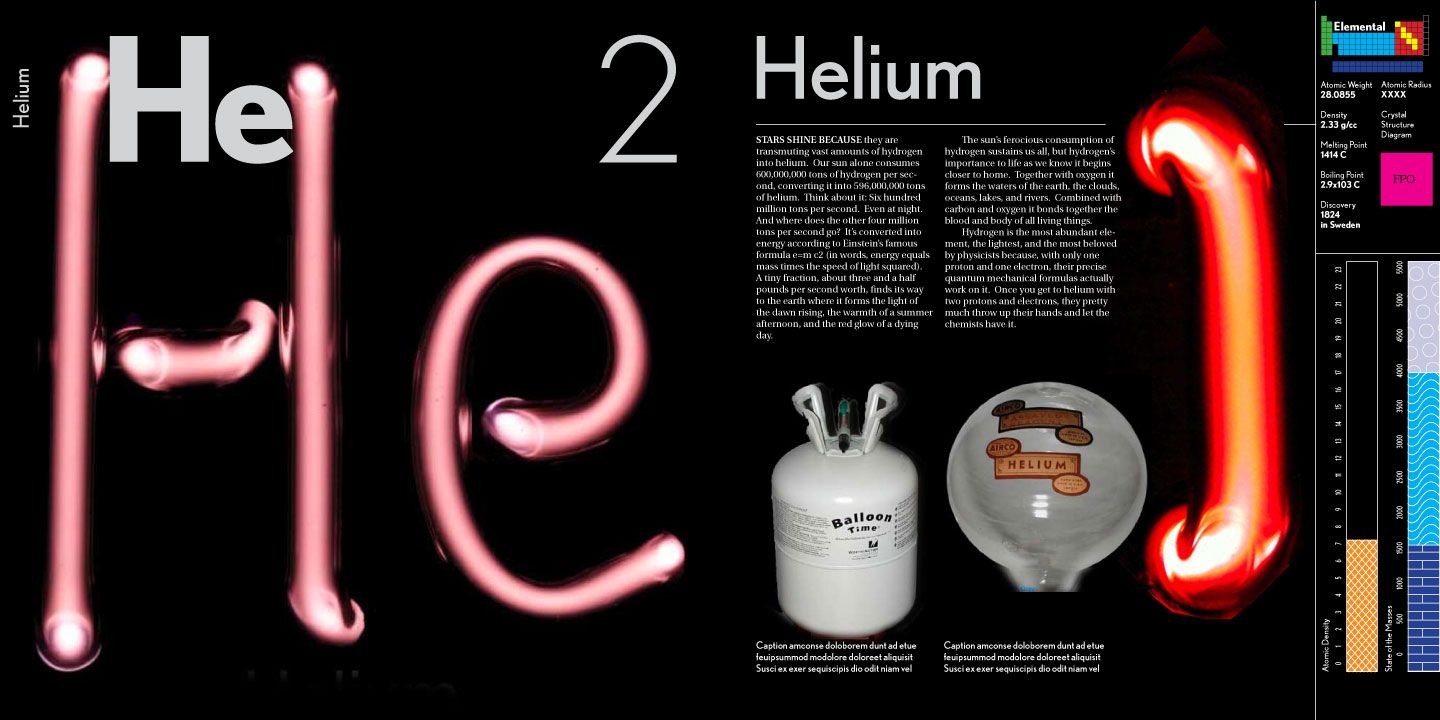
Interview With Theo Gray

ScriptPhD.com Editor Jovana Grbic was fortunate to chat with Theo Gray recently, and was eager to get his perspective on the making of The Elements and Mad Science books, and some more meaty science policy issues as well.
ScriptPhD.com: Tell me a bit about the idea to put together The Elements.
Theo Gray: The book goes back quite a ways. I started collecting elements, really by accident, in 2002. We needed a table for the common area of the office I was moving into, and I didn’t want some kind of an ugly thing that you could get from an office supply catalog, so I had tables on my mind. Then, I was reading Uncle Tungsten by Oliver Sachs, and he describes a periodic table that he used to visit at the science museum. I took that literally, and thought the table literally looked like a table, and that seemed like the coolest thing—someone should make a periodic table [with slots for the elements], and at that point no one ever had! Because of the way the table was designed, it was easy to make little compartments underneath each element where you could put a sample of the element. This was right around when eBay was exploding, and it turned out you could get a great many elements there. It kind of happened by accident. One table led to another, and pretty soon, I had thousands of element [samples], pure and industrial compounds. Then I started photographing them to remember what they are. I put the cataloged list and accompanying photographs on the web, and people liked it, and the Ig Nobel Award I got in 2002 made me think that this is something other people might be interested in, too.
One thing led to another, and the cameras started getting fancier, and the photography started getting better, and pretty soon I thought I could make a poster [of the elements]. This poster is now seem on TV shows from MythBusters to Hannah Montana, which eventually led to The Elements.

SPhD: One of the things I really loved about The Elements was the humor interspersed throughout the copy. You manage to really make it fun, lively and at times hilarious. Was this writing style meant to parallel how you view science, and chemistry in particular?
TG: The other thing that I’d been doing [while compiling the book] every month, was writing a column for Popular Science Magazine, Gray matter. And it’s popular, it’s a popular magazine, as the name implies, written very much for a lay audience. So I did that every month, writing 350-450 words about a certain topic of science and working with excellent editors there to refine the language to compete with other popular publications—immediately engaging, and with some fun in it. I think it’s fair to say that over the course of the five years that I’ve been writing the column, I’d refined my ability to write consicely about a focused topic. And that’s what The Elements book is, a hundred Popular Science columns all wrapped up. In some cases, the story behind an element was so much more interesting than any practical uses we could highlight. [Editor’s note: radium is a particularly good example of this!]
SPhD: What were the biggest challenges during the making of the book and photography of the elements?
TG: In terms of the writing of the book, the rare earths, or Lanthanide series, was the toughest by far, because all of the Lanthanides are very similar [in chemical property]. In many cases, for commercial applications, they’re essentially interchangeable. If you’re making lighter flicks, it really doesn’t matter what rare earth you’re using—and they don’t even purify them, they just take them out of the ground. And many of them don’t really have any interesting applications. Although, it was interesting to discover Thulium (Tm 69), for example, which I’d gone for years thinking that no one actually cared about. But it turns out in the lighting industry they care passionately about thulium, and they couldn’t live without it [for metal halide lamps].
The challenge with the photography is that these are all essentially lumps of gray metal. 90%+ of all the elements are gray metals and shapeless. One of the few other photo periodic tables out there was published in the 1960s by Time-LIFE, and they all look the same—not very interesting! Our job was exactly like the job of a commercial photographer, an advertising photographer. They’re given a product that might be the most boring thing you ever saw, and they have to bring out its inner beauty by way of lighting and arrangement. We tried to think of the most exciting examples of each metal. We also did cheat a bit, with some of the beautiful, colorful crystals, which are not pure elements but rather compounds. But it is an excuse to put a splash of color on every page!

SPhD: You know I’m going to ask… you’re the Element King… What’s your favorite element and why?
TG: Ahh, the favorite element question! My first answer is that I don’t have a favorite child, either. But there’s different elements that I like for different reasons. Sodium, for example, if you have a lake near-by, is the element you want to have. [Editor’s note: BE CAREFUL! HIGHLY EXPLOSIVE!] On the other hand, something like titanium is a wonderful metal in every way—it doesn’t rust, it’s malleable, highly useful, strong, and many of its applications are interesting and exotic. Copper is so great as well, because it’s the only colored metal that is reasonably priced and not explosive. Cesium explodes, and gold is very expensive. That leaves copper, but people don’t tend to make sophisticated shapes out of it other than jewelry. But if I had to name two, it would be sodium and titanium.
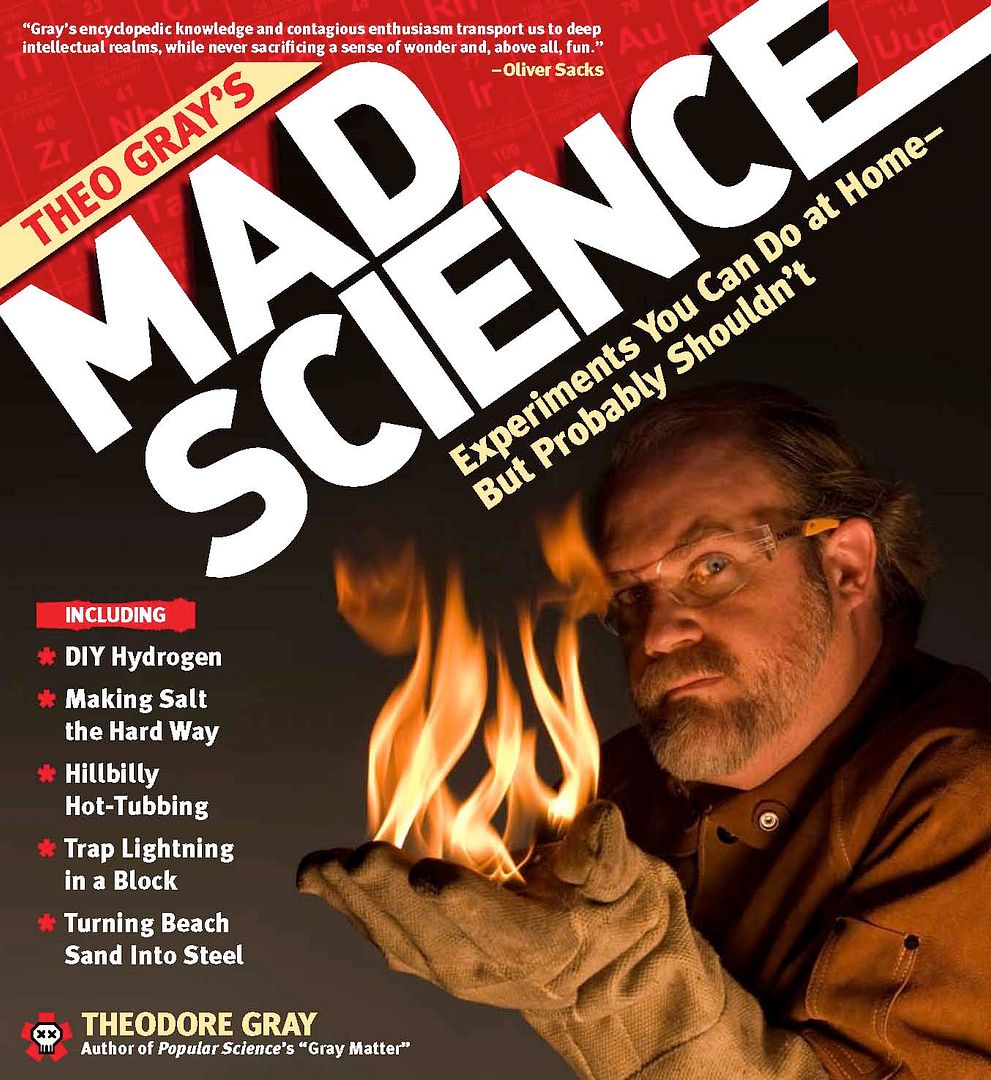
SPhD: Let’s talk about your other book for a moment, Mad Science. Some of my favorite experiments that I want to replicate are the lightbulb, homemade pencils, 1-volt liquid battery (which I’ll use to charge up my iPod), plating the iPod, and my personal favorite, preserving a snowflake. Was there an experiment in this book that made it in or didn’t where you either felt like your life was in danger or you were like, “OK, change of plans, we’re not doing this.”?
TG: I have a policy of not doing anything dangerous. These experiments [from the book] are only dangerous if you don’t do them right, which I explain fairly well in the safety section. Because basically, I’m a complete ninny. I’m terrified of that stuff, which is the way that you ought to be. There is a good bit of thought that went into the worst case scenario, and if there was a shred of doubt, we rethought the experiment—smaller scale, or do it differently. One of the advantages of doing it for photography as opposed to in person is that we were able to get away with extremely small quantities. We also hired specialists where applicable, such as an electrical engineer for shrinking coin trick, or an industrial chemist for the chlorine experiment.
The one experiment that I suggest your readers do is the snowflake one, which is just so nice, and only took me three or four tries. The key is to keep your slide really cold and pre-cooled, and to handle them with your hands the least amount possible.
SPhD: You are, of course, most well known for your Popular Science column Gray Matter. How has writing Gray Matter, particularly focused for a lay audience, changed your role in science?
TG: It’s interesting to be faced with the challenge of trying to explain something that is actually quite complicated and deep in a format where you only have a few hundred words and you can’t assume that your audience has four semesters of college chemistry. If I were writing for Scientific American, it would be quite different and you could use a certain shorthand quite freely. Here, I have not not only explain everything, but also make it fun and entertaining. The most important thing is that I have an opportunity to speak to people, particularly young people, who probably aren’t getting any actual science anywhere else. Rather than preaching to the choir about the value and interestingness of science, I can reach out to a new audience. Often in lay magazines, it’s frustrating to read so much pseudo-science because the people doing it don’t actually know what they’re talking about. The other thing I like to do is scatter some breadcrumbs throughout my writing to leave hints or terms that can’t really be explained to encourage people to look things up on their own.
SPhD: So much of our modern culture is influenced by the growth of technology and science, which play a huge role in our lives and economy than ever before. And yet, as a whole, mainstream public knowledge of basic science can be shockingly absent or misinformed. What is the single most important thing people like you, myself and others in the science community can do to mitigate this?
TG: There’s a couple of things. One is, and I’ve written a couple of blog posts about this for Powell’s Books, that you need to be relatively fearless in getting out there and telling the truth without worrying about repercussions or consequences. I’m talking about things like creationism or homeopathy, which are two basically stupid ideas which are very widely believed. People like me have a responsibility not to beat around the bush [as to their accuracy or lack thereof]. One needs to have strong attitudes because that’s what gets people riled up. At the same time, one needs to communicate that science is something that is worth putting effort into and learning about, because it’s very powerful. If you understand it, and your competitor doesn’t, you win, in many, many situations. We see this both in technology and at the societal level, one that we’re frankly losing to China. While we’re arguing about evolution and homeopathy, they’re gathering all the natural resources they can to become the dominant global economy next Century.
SPhD: You are one of the few scientists that have crossed the barrier to entertainment and wider popular appeal. Why do you think more academics have not? Is it a problem of the public welcoming these figures, hesitation in the academic community of going mainstream, or something in the middle?
TG: It depends. There’s different motivations. I, for example, grew up in an entirely academic household; both of my parents were math professors. I completely understand that world and that mindset. The kind of articles that I write for Popular Science would be considered more than a little bit embarrassing if I were an academic and had to worry about tenure committees and citations of academic papers. It’s not a very respectable profession, from an academic point of view, and I think that keeps a lot of people out who could write for a broader popular audience. It’s also a quite different skill, one that’s taken me decades, to develop the writing style that works for a lay audience—and it’s not easy to do.
And then on the other side, there’s a resistance among the publishers and media types to take science seriously because they assume it’s going to be boring. It irritates me greatly when TV shows about science end up being frantically edited, with lots of flashy graphics going up. And you can just tell that what happened was that none of the people involved knew anything about science (or possibly cared). But if you look at a show like MythBusters, for example, it’s a fantastic science show.
SPhD: Yes! We love MythBusters!
TG: They are one of the most successful of all cable shows, and they are 95% a science show wrapped up around the theme of a “myth” that they have to “bust.” Fundamentally, what they do is pose a question and then hypothesize and answer it using the scientific method. I don’t know if people appreciate how revolutionary it is for them to do that consistently.
SPhD: This is why ScriptPhD.com loves The Discovery Channel and MythBusters so much. We are in contact with them, we’re big supporters, and we wish them, and you, a lot of luck with shepherding the next generation of curious young scientists!
TG: Delightful to talk to you as well. Thanks!
~*ScriptPhD*~
*****************
ScriptPhD.com covers science and technology in entertainment, media and advertising. Hire our consulting company for creative content development.
Follow us on Twitter and our Facebook fan page. Subscribe to free email notifications of new posts on our home page.
]]>
During a recent trip to New York City, I had the pleasure of befriending exciting new author Ernesto Robles, whose debut novel The Malthusian Catastrophe is a ScriptPhD.com recommended pick. Smart, topical, fast-paced and decidedly engrossing, this biomedical thriller drives at the roots of our cultural obsession with the “fountain of youth” and the perilous socioeconomic repercussions of actually finding and disseminating it. In a year when the Nobel Prize for Medicine and Physiology went to a team of researchers for their discovery of how chromosomes are protected by telomeres and the enzyme telomerase, essential biological components of the human aging machinery, and a cultural era that has anointed juvenescence as sacrosanct, Malthusian’s overarching themes are especially germane. ScriptPhD.com’s discussion includes a review of the book, the biology and ethics of current aging research, and a one-on-one interview with Mr. Robles. For full content, please click “continue reading.”
A Malthusian catastrophe, originally postulated by the 18th Century economist Thomas Malthus, proposes that “the power of population is indefinitely greater than the power in the earth to produce subsistence for man. Population, when unchecked, increases in a geometrical ratio.” That is, when a population grows beyond sustainable levels, it will force a return to primitive, subsistence-based living. Highly influential on Charles Darwin’s Natural Selection work, the theory has caused a divergence of opinions on applicability to modern-day conditions. A recent New York Times Science piece argued that post-Industrial Age conditions and improvements to the food supply chain had rendered the theory obsolete, while the Wall Street Journal counterargued that high global living standards (a car for every household, for example) would create deleterious, and eventually catastrophic, economic and environmental crises. Such is the backdrop against which the events of The Malthusian Catastrophe take place.
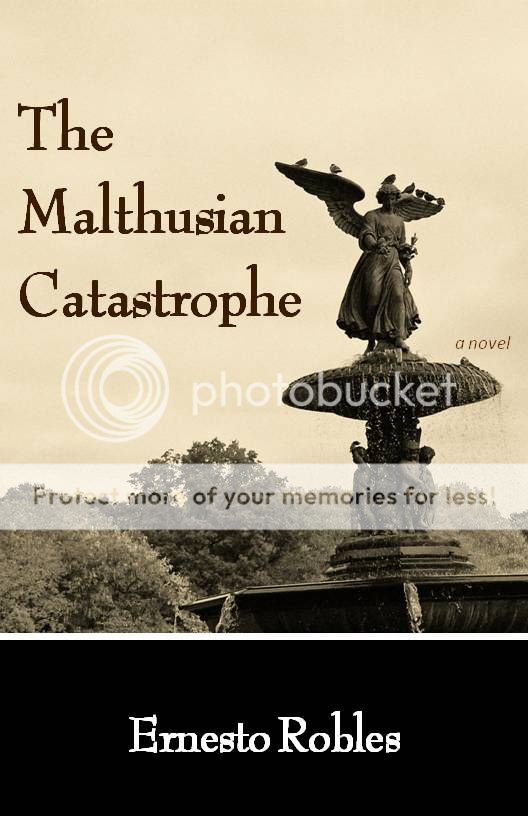
Michael Jeffs is a bright, ambitious former Wall Street broker caught in the web of steadily rising unemployment and economic strife. Desperate for a job, he goes on a last-ditch interview at the mysterious but quickly growing company Aseso Neutraceuticals, sellers of Sinsen, an herbal supplement that is believed to arrest, if not reverse, aging. Headed by passionate brilliant Stanford scientist David Oaks and reclusive Japanese businessman Toshiro Tanaka, Aseso is on the cusp of a global craze. Michael doesn’t know much, but he knows he needs a job, so he accepts Aseso’s offer to run their business strategy and moves to New York City with his compassionate artist girlfriend, Caroline. A fancy apartment, money in the bank, and being a part of “the fountain of youth”—it all seems too good to be true.
With Michael’s help, it doesn’t take long for Aseso to take off. Public acess to Sinsen becomes difficult for all but the richest and most well-connected, a situation that is only exacerbated when scientific studies reveal that Sinsen’s two market rivals, Carotegen and Reversetrol, do not possess anti-aging properties, while Sinsen does. This shocking revelation is based on a scientific deception so grand, that it has far-reaching consequences for Aseso, Michael, and the entire globe. Aseso’s rising fortunes perfectly mirror the spiraling penury and abject living conditions of New York City and the rest of the world, scenes of which represent some of Mr. Robles’s strongest writing throughout the book. Sinsen becomes more than just an anti-aging pill; it bestows political capital, economic force, and ultimately, total domination. All valuable land resources, manpower, government coups, and even acts of terrorism are perpetrated towards production and acquisition of Sinsen. Unfortunately, public zeal and corporate greed are thwarted and toppled by the greatest scientific property of them all—shocking unpredictability.
With a crisp, approachable writing style, Mr. Robles crafts together a stylish novel whose gripping plot points are far outweighed by the modern-day dilemmas they weave together. In the form of character archetypes, he is asking us, the reader, to make a choice about life extension. While Michael Jeffs succumbs to the inertia of a populist tidal force both in taking Sinsen and aggressively marketing it (despite the meek protests of his inner doubts), his girlfriend Caroline is a stalwart moralist who adamantly opposes what she feels is a social experiment gone awry, her graying hair a physiological manifestation of both her indignation and their fraying relationship. In the middle is Dr. Joanna Hochberg, ever the hypocrite, vociferously impugning Sisen use by the general population even as she’s taking it on the side. There is the idea of corporate greed in the dawning of an age where medical and biotechnology advancement represents the future of power, an inequity manifesting itself in the third world before our eyes. In Mr. Robles’s hands, first world citizens are those that can take Sinsen irrespective of geography, and thereby outlive and outlast, and the third world is comprised of those that can’t—with no in-between. Furthermore, the book delves into the price of chasing immortality with unproven, theoretical remedies. [The United States market for supplements (herbal, food and drug)—which are exempt from FDA regulation—exceeded $25 billion in 2008.] Some people, due to a cruel, unexpected twist of biology, even paid the ultimate price.
Finally, and most importantly, is the paramount question of ethics and sustainability. Should we live forever? Can we? The Malthusian Catastrophe closes by invoking a very famous, oft-repeated psychological experiment by John B. Calhoun that tested the limits of population density and sustainability. Building the foundation for a generation of scientists, Calhoun hypothesized that there exists an innate upper limit to the number of meaningful social interactions that an individual could cope with before stress became a factor. In a habitat that could uncomfortably house 5,000 rats, the population always leveled off at 150, and never exceeded 200, incurring extreme behavior including exclusive homosexuality, high (>96%) infant mortality rates, psychological withdrawal, and male hyperaggression. The experiment was named as one of 40 Studies That Changed Psychology, and Calhoun’s rats have come to serve as a model for urban crowding and decay, civil unrest (including the Watts and Newark 60s riots), and sustainable population growth models. All of this begs the question of whether it’s ethical to fight the natural biology of aging and generational turnover, or whether technological advancement represents a quantum leap in human evolution and survival of the fittest. Professor Peter Singer, an Australian philosopher and Professor of Bioethics at Princeton University, has engendered enormous controversy for his claims that animals deserve to be treated like humans, and his pro-euthanasia stances. In the early 90s, Dr. Singer argued against radical life extension and the production of an anti-aging pill as developing the drug would fail to achieve the greatest sum of happiness over time. On the opposite side of the bioethical spectrum is another Aussie, Dr. Russell Blackford, Professor of philosophy and bioethics at Monash University. His recent piece in the “Institute For Ethics and Emerging Technologies” blog offers a diametrical proposal: that such a pill will be produced anyway and, all other factors being equal, as long as the expanded lives end well, they are morally acceptable.
The aforementioned concepts were beautifully assembled in a recent TED Talk by UCLA Professor and scientist Jared Diamond, author of Guns, Germs and Steel: The Fates of Human Societies and Collapse: How Societies Choose to Fail or Succeed. Please ignore the awful combover—he’s really a very smart man!
The Biology of Aging: Source for a Cure?
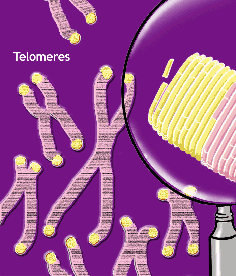
Embedded within The Malthusian Catastrophe is some fairly sophisticated and cleverly-researched biology. The supplement sinsen is derived from the root of the actual Chinese Astragalus plant, and acts as an activator of telomerase, an enzyme that plays a key function in protecting telomeres and has been implicated in the canon of anti-aging research and drug development. Let’s first back up and talk about what telomeres are and why they’re so critical. The 2009 Nobel Prize in Medicine was awarded to three American researchers, Drs. Jack Szostak, Carol Greider and Elizabeth Blackburn, for discovery of and contributions to the field of telomere research. The DNA that codes your genes (what makes you you) goes through a series of complex folding and packaging steps to condense its volume, protect the DNA, and allow for simpler replication of genetic material during cell division, an ever-ongoing process during our lives. Long strings of DNA are first scrunched together like a wad of paper in structures called “nucleosomes”, then combine with and around proteins called histones to form “beads-on-a-string” (sort of like a necklace with a bunch of charms on it), then into dense ordered fibers, and finally into the familiar compact X-shape by which we can identify chromosomes. At the very tips of these structures are ordered, noncoding, repetitive sequences of DNA that act as “caps” to the chromosome (see picture). These are called telomeres. Blackburn has compared these ends to the protective anglets at the ends of shoelaces. When a cell divides, this folding process reverses itself and DNA unwinds to copy for the new cell. In order to protect the more important parts of your DNA (those that actually code for proteins), the replication process “snips” the very ends—the telomeres. Eventually, over the course of enough cell divisions, the telomere frays to a dangerously short length, endangering these important regions of DNA. Scientists can tell how old a cell is based on its telomere length, akin to the rings of a tree trunk. Telomeres have thus been implicated in human aging, cancer, and many of the so-called “aging diseases”.

Luckily for us, biology has devised a very clever, evolutionarily conserved mechanism for decelerating chromosomal shortening in the form of telomerase, an enzyme that elongates telomeres by adding a specific DNA sequence common to all vertebrate animals (TTAGGG). Activation of this enzyme is considered the Holy Grail of anti-aging research. Interestingly, research has shown that socioeconomic status correlates to telomere length, with poorer people exhibiting shorter telomeres than the rich. New York City based TA Sciences is attempting to invent itself as the real-life Aseso Neutraceuticals, marketing a pill called TA-65, an extract of the same herb in the book, Astragalus, a plant has been used for centuries by Chinese herbalists for medicinal purposes. TA Sciences concentrates a low-level extract in the form of TA-65, which they propose is a telomerase activator. Recent media attention has included Newsweek and the Los Angeles Times. (Los Angeles? Interested in eternal youth? Color me stunned!) But before you rush to the TA Sciences website to put in your order for this super-supplement, be aware that several challenges currently face telomere research, including lack of an appropriate animal testing model, evidence that telomere lengthening may increase cancer cell proliferation, and of course, the risk of taking an unknown substance that has not been approved by the FDA.
One thing you can do fearlessly, and often, is drink red wine. The grapevine produces one of the highest naturally occurring concentrations of resveratrol in the skin of the grape of any food or herb. What is resveratrol and why is it a key to aging and disease? Numerous consensus studies of late (a nice collection can be found here) have found that calorie restriction diets in mice, rats, and other animals drastically expand their life spans. One important biochemical pathway activated by these low-calorie diets are the enzyme family of sirtuins. Sirtuins regulate key components of metabolism, cell defense and reproduction, and one of the most powerful sirtuin activators is… you guessed it! Resveratrol. Indeed, a landmark 2006 study found that the physiology of obese mice whose high fat diet was supplemented by resveratrol mirrored that of a healthy mouse and significantly extended their lives compared to placebo groups. Naturally, the market and demand for resveratrol nutritional supplements sprouted virtually overnight, with production coming from both chemical synthesis and extraction from Japanese knotweed. To date, benefits to humans of resveratrol supplements are unproven and the collective field of anti-aging research has advanced modestly. Resveratrol can also be found in blueberries, peanuts, and various other plants. But here at ScriptPhD.com, we think red wine is the best solution. Salud!
We are clearly on the cusp of grasping the futuristic science imagined by Mr. Robles. Research will undoubtedly unlock the biological keys of aging, disease, and the pharmaceutical industry will likely follow suit with a panacea of one sort or another. It is not inconceivable that within our lifetimes, we will be offered the same choice as the characters of The Malthusian Catastrophe. Age naturally, or defy Mother Nature? Which will you choose?
Interview with The Malthusian Catastrophe author Ernesto Robles:
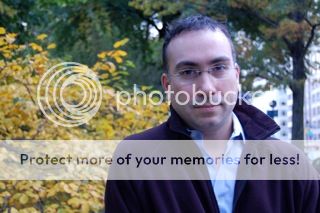
ScriptPhD.com: Your background professionally spans economics and business, and yet the book that you wrote is in essence a biomedical thriller. What prompted your interest in science as a backdrop for your first novel?
I started off wanting to write an economic oriented non-fiction book catered to people who do not know much about economics. After a bit of research, I concluded that many in my target audience would prefer to learn something if it were embedded within an entertaining story. Also, I find it helpful to extend a scenario to its logical extreme to better illustrate a point. Economics is basically the study of the behavioral interaction between those that demand and those that supply. To that end, I decided to write a novel about something many people would demand (extended life) and those that supply (profit motivated companies). When I started researching the science of aging, I came across many scientists doing serious research on the subject. I decided to base the science in the book on one particular scientist Dr. Elizabeth Blackburn, UCSF. Coincidently she won the Nobel Prize in Medicine this past October, one month before the book was published.
Science has the potential to make linear trends go, all of a sudden, parabolic… but then again so does human behavior… which makes for an interesting story.
SPhD: One of the ways that Aseso Neutraceuticals is able to execute the (unnamed) Grand Deception that sets off the key chain of events is through marketing Sinsen as a supplement, not a drug, thereby absolving it of the FDA regulatory oversight that all other drugs are subject to. Is this book at all a commentary on the hundreds, if not thousands, of nutritional supplements being consumed without any clear knowledge of effects or safety, and would you support FDA approval of nutritional supplements?
ER: To answer the question I should shed light on the situation. Right now the responsibility of the safety of a new supplement rests with the manufacturer and only after the product hits the market, and is presumably consumed by people, does the FDA assume some responsibility. I say “some” because the FDA is responsible for the safety of the product; which is to say that it is responsible for the product not causing you any harm; but it certainly does not opine on the efficacy of the product. Having each supplement pulled from the market to undergo clinical trials seems a bit impractical. People should do their own research and consult with their primary doctor. This situation is like going to church. The structural engineer of the municipality that certified the church as “safe” did not make any claims about the efficacy of that church towards entry to heaven. As long as people truly understand the analogy the current practice seems the most practical given the limited resources available to the FDA.
The commentary in the book was more to say that the FDA like many governmental agencies is a political institution where some of the actions only seem logical from a political perspective. Much of what is studied and approved at the FDA is driven by pharmaceutical companies wanting to bring a new drug to market. If a disease has not yet been classified, that would either be prevented or cured by this hypothetical new drug, then the
FDA just might classify a new disease solely to have the new drug approved. I am not saying this is the right or wrong way to do things, I just think people should be aware of how things in Washington DC get done. If someone is trying to sell a solution it helps that a problem exists.
SPhD: Before the climactic revelation that is the novel’s denouement, Sinsen engenders a very strong two-sided debate. There are those that feel it’s a miracle pill and that everyone should revel in its anti-aging benefits (such as the novel’s protagonist Michael Jeffs), and there are those who feel it’s messing with God or Mother Nature, and that people should age naturally as the order of the universe dictates (such as Michael’s girlfriend Caroline). When all is said and done, what side of the debate do you fall on? Would you take Sinsen?
ER: I would probably fall on the side of a third character, Dr. Joanna Hochberg. I am a selfish person like anyone else (perhaps more so) so it would be hard for me to resist taking Sinsen however the moral intellectual inside of me (if there is one…a big if) would have to admit to the obvious social consequences that would result. I am a huge carnivore. If the US outlawed meat I might be tempted to follow my roots back to Mexico. If we lived in the world of The Malthusian Catastrophe and the US outlawed Sinsen you can bet my Spanish would improve dramatically.
SPhD: There are many thematic elements at play in this novel, including the vain pursuit of endless youth, greed, deception, and biomedical ethics, but at its heart, this book is an economic cautionary tale. The long-term ramifications of continuing to supply Sinsen to an expanding client list are potentially devastating. What is the one take-away point you want people to absorb from reading this book?
ER: The big take away should be something I call “Rolling the Film Forward”. I know someone who has lived in San Diego for most of his life. For the first house he bought he had to put ten percent down. For the second house he bought, in 2002, he didn’t have to put any money down. Finally, for the last house he bought in 2005 the bank gave him 10 percent on top of the value of the house. This is a classic case of people (in this case banks and the capital markets) not Rolling the Film Forward. This scenario was obviously not sustainable and therefore most likely reversible. Rolling the Film Forward, one could have predicted the film would have a bad ending. There is a good book, Devil Take the Hindmost (Edward Chancellor), that gives a pretty good historical account of this type of thing happening again and again. One other life lesson I would like to share is the following: If you ever find yourself scratching your head wondering why an event or change took place that seemed contrary to logic or societal benefit, then go find out who stood to profit the most from that change. More often than not you will discover that they had something to do with it.
SPhD: Any chance we will see “The Malthusian Catastrophe” head to a movie theater in the future? It would certainly make for a very gripping cinematic experience.
ER: Many people ask me that. I haven’t had any serious discussions but would be open to it.
SPhD: What are some of your future projects that we can look forward to?
ER: I am currently working on my second novel. The story is based on an old Wall Street urban legend. Hopefully people will react to it as positively as they have to The Malthusian Catastrophe. I’ll be sure to send you an advance copy.
~*ScriptPhD*~
*****************
ScriptPhD.com covers science and technology in entertainment, media and advertising. Hire our consulting company for creative content development.
Follow us on Twitter and our Facebook fan page. Subscribe to free email notifications of new posts on our home page.
]]>
